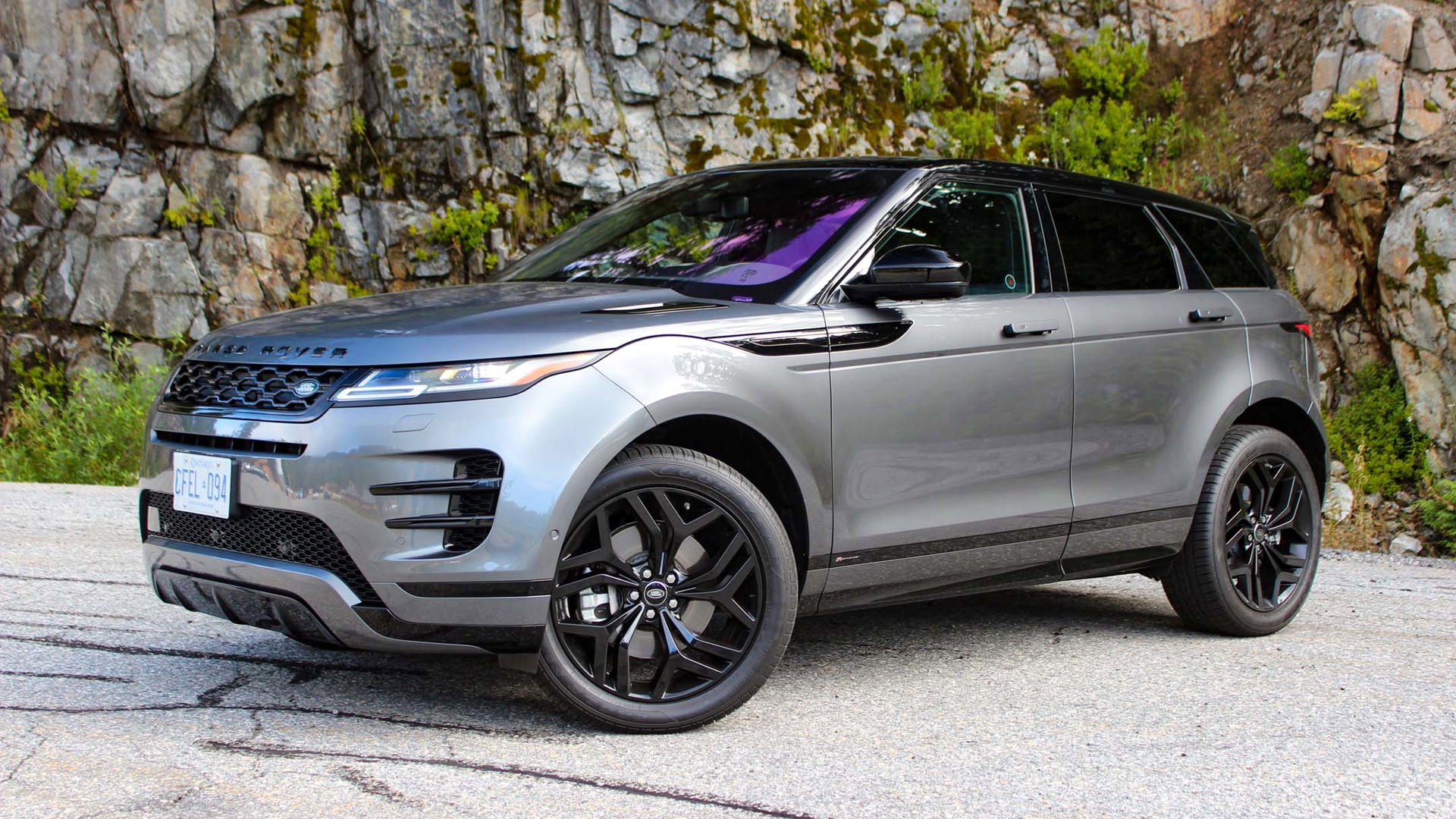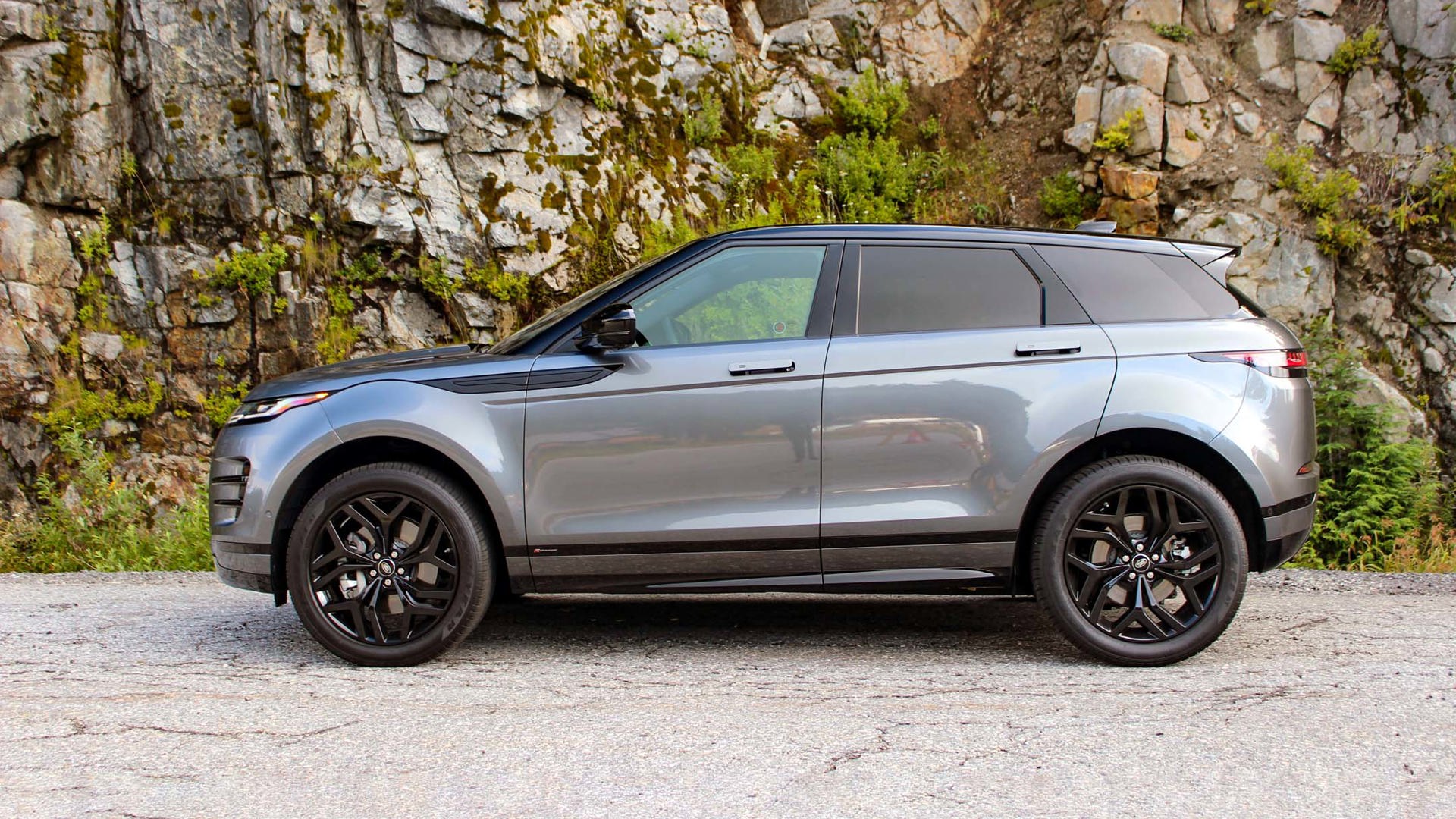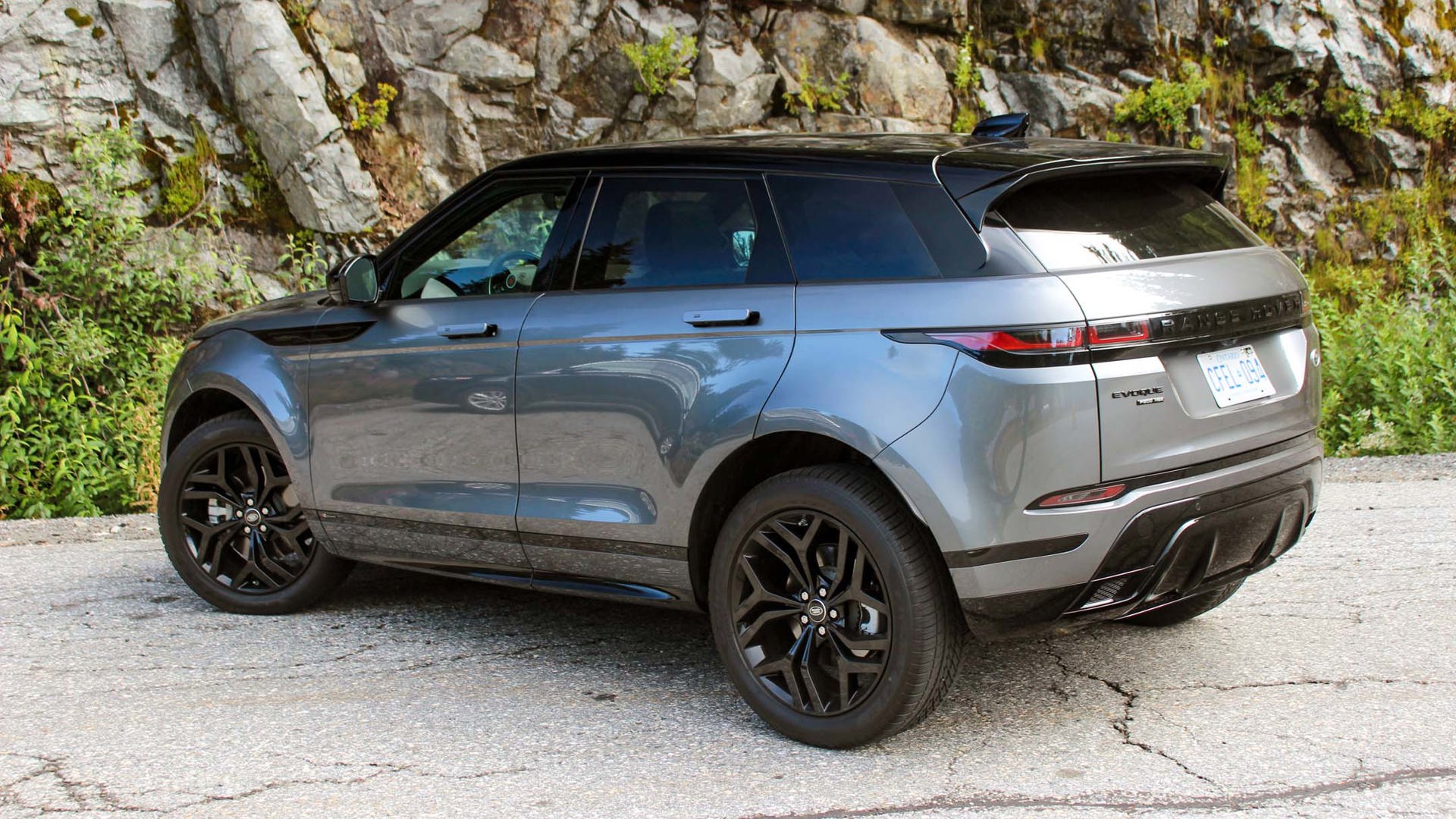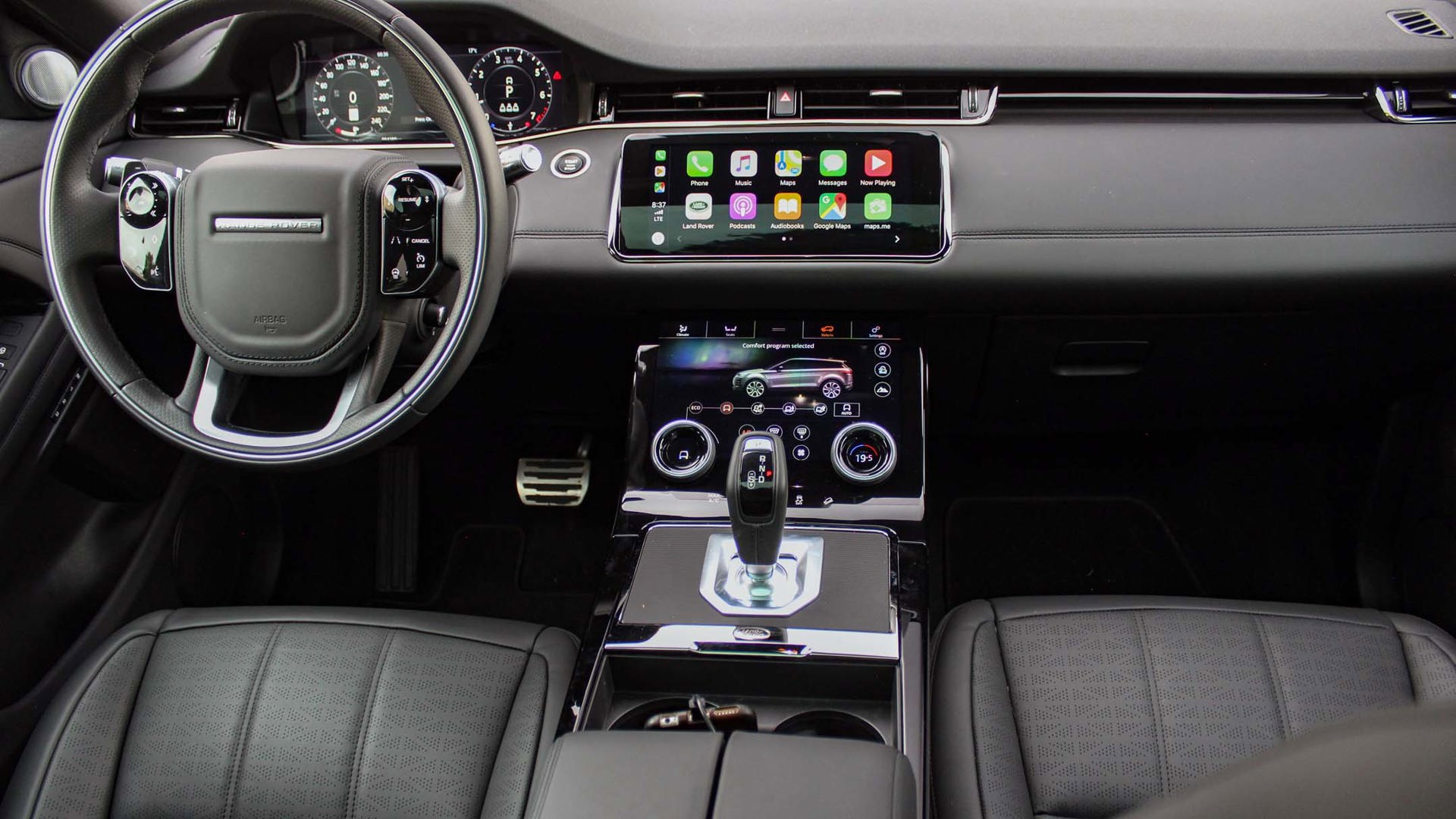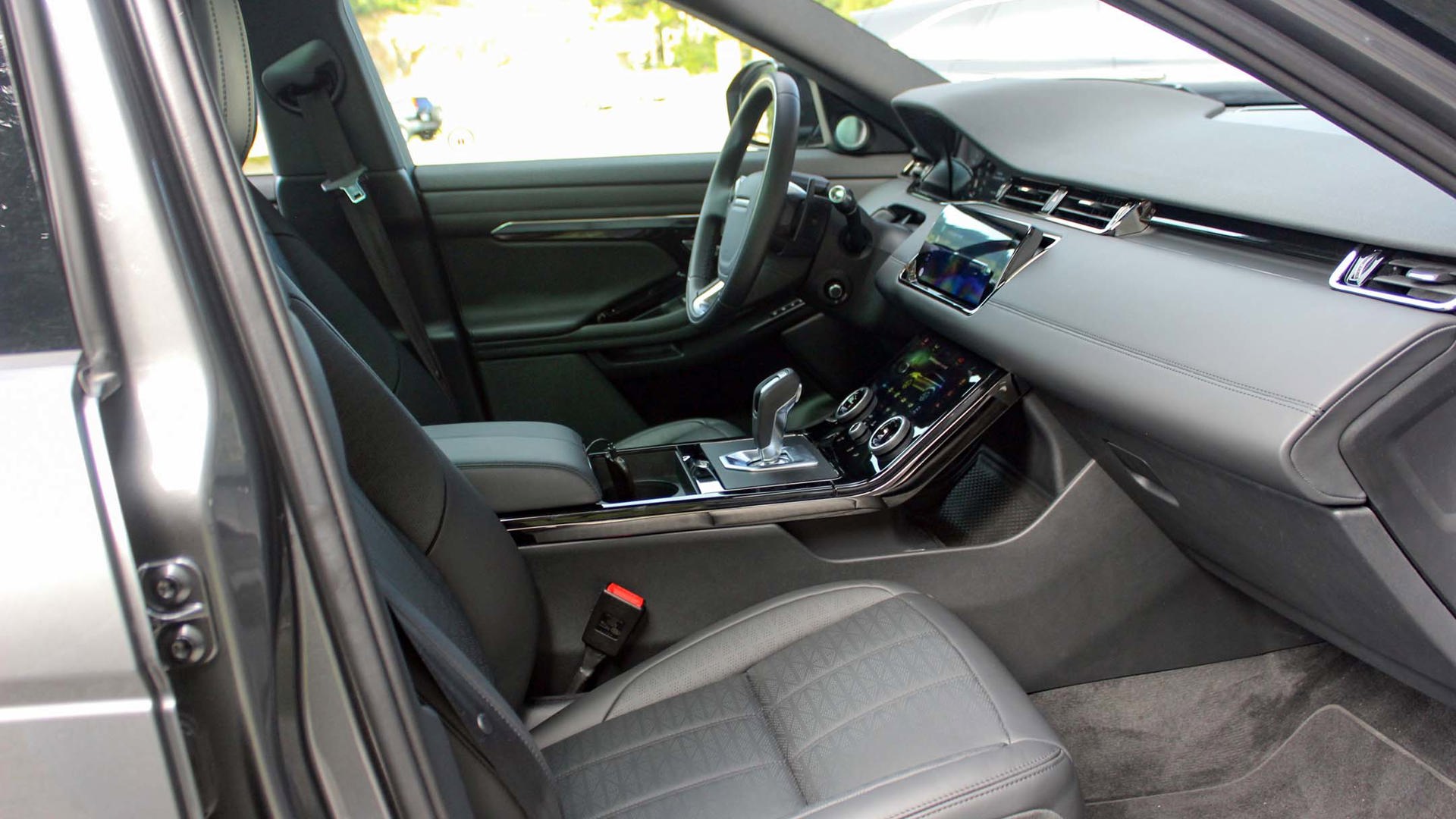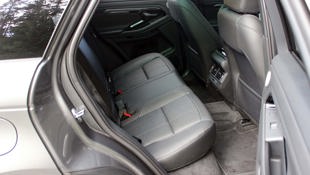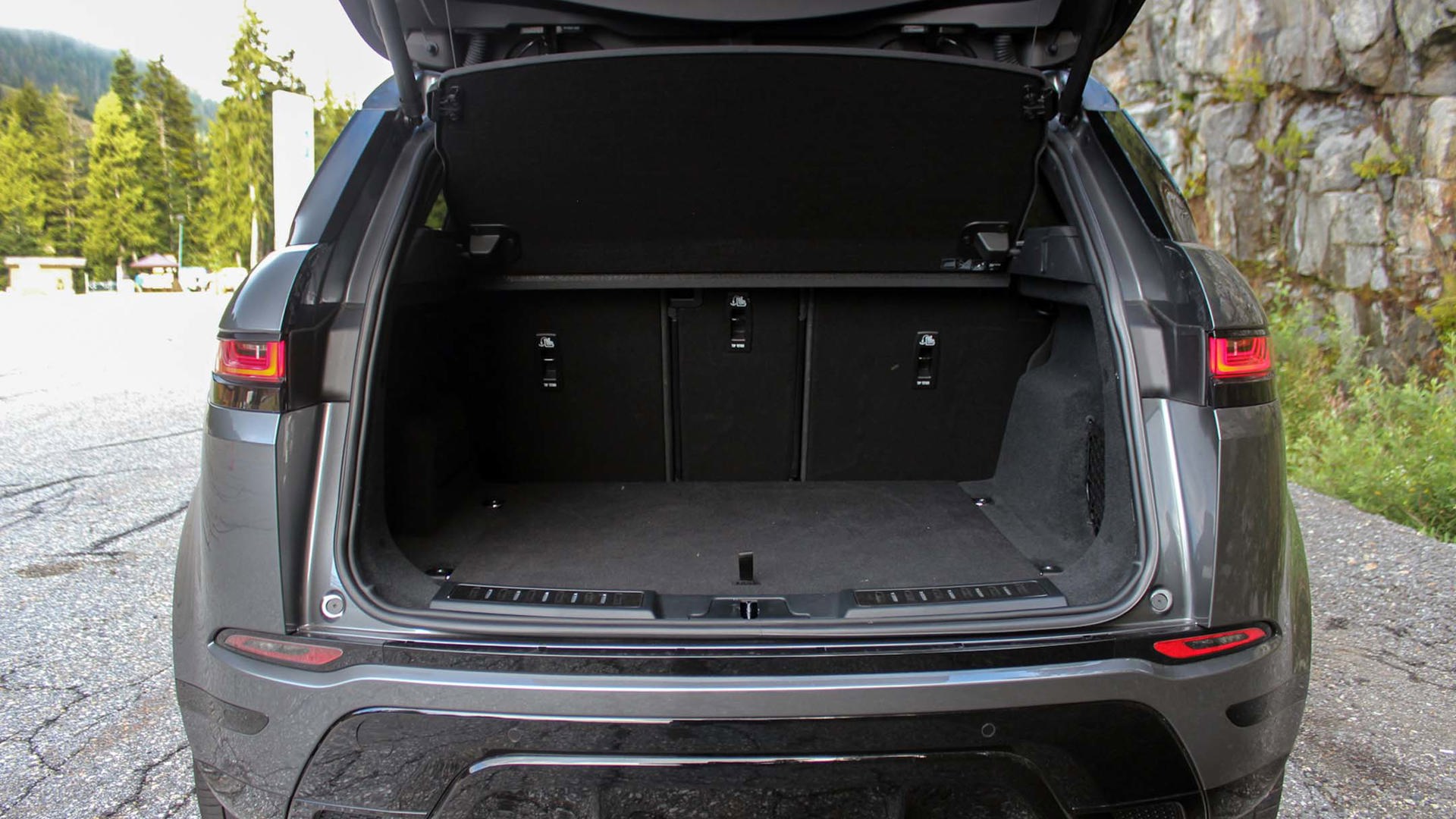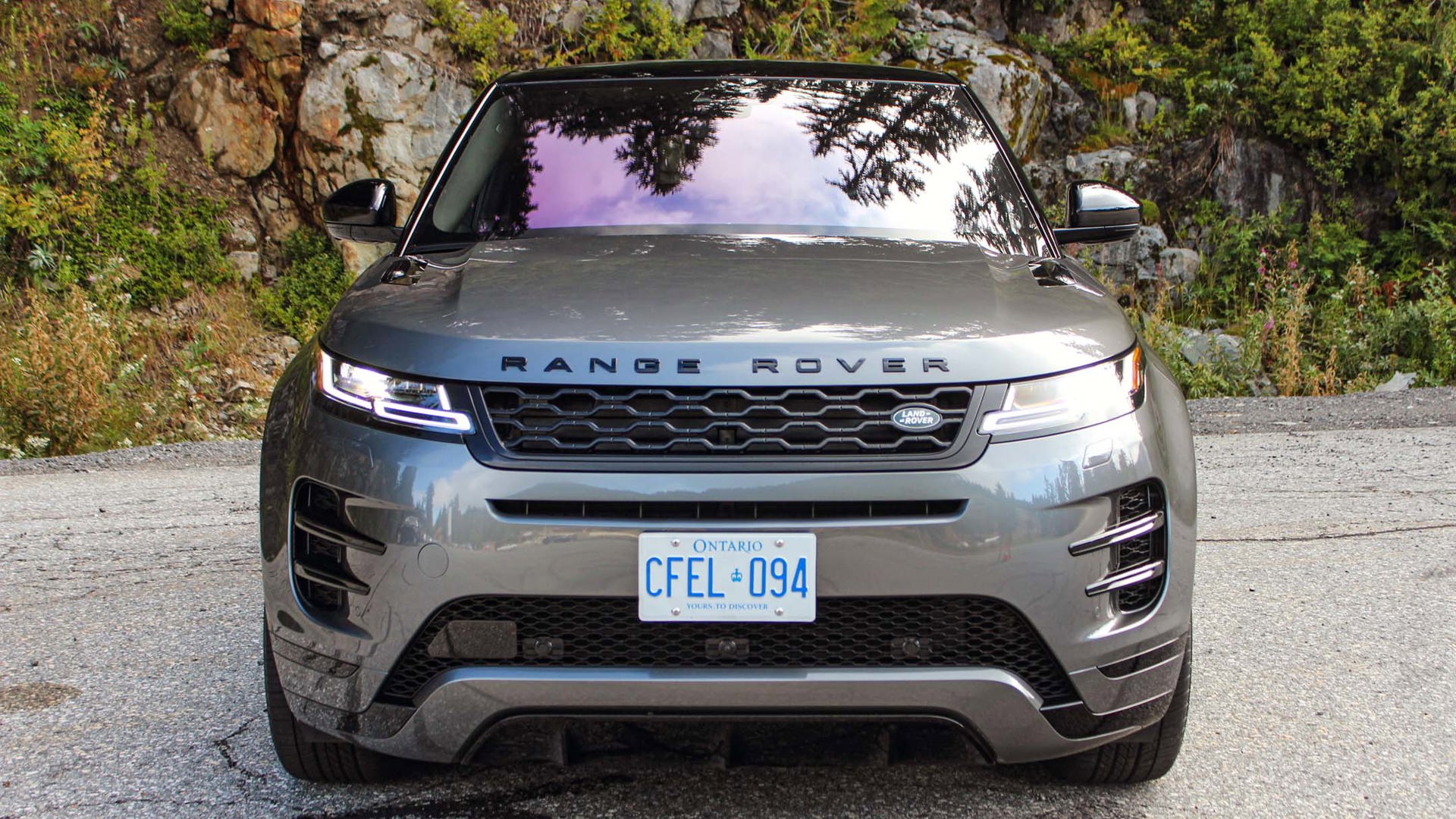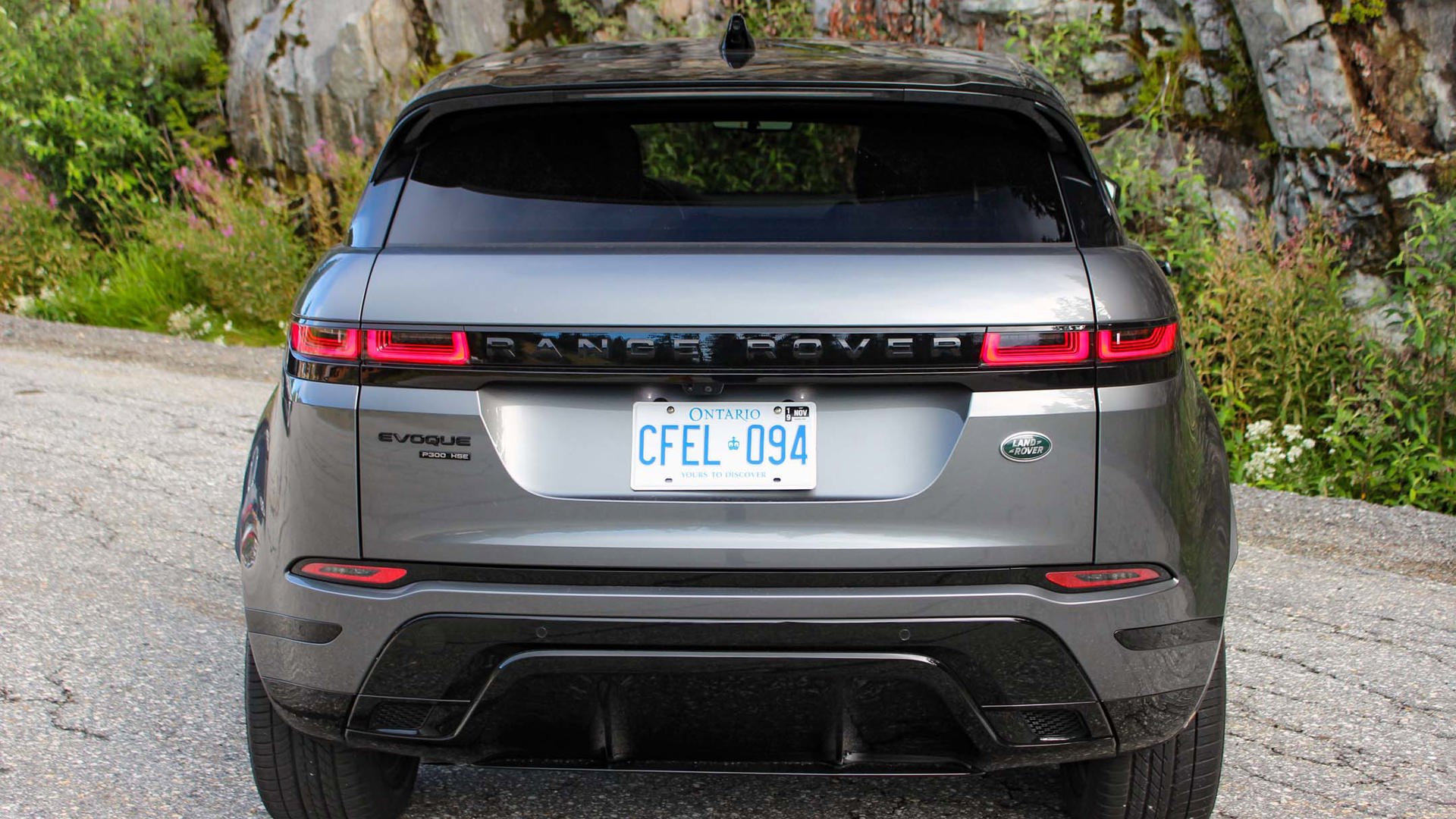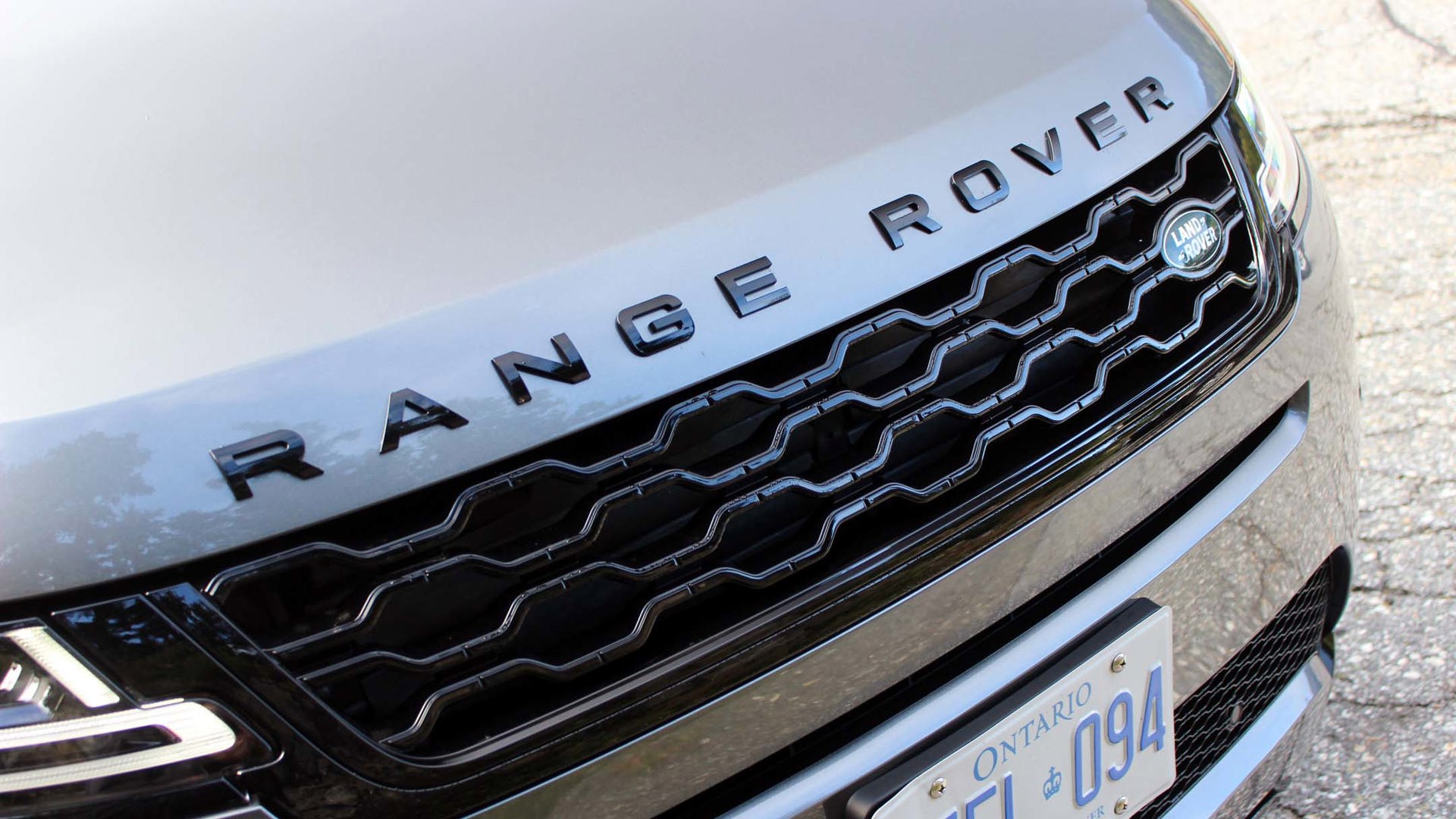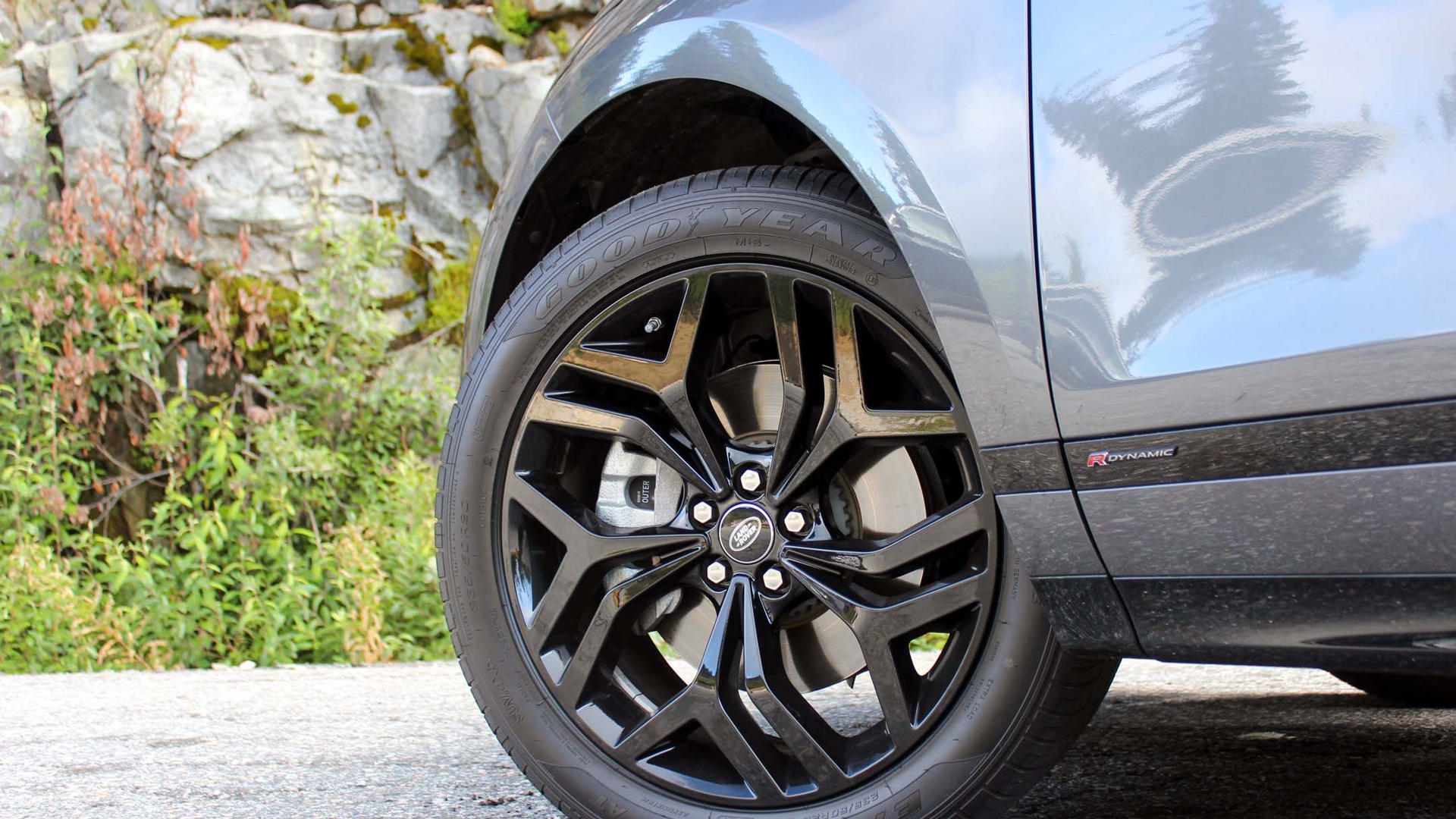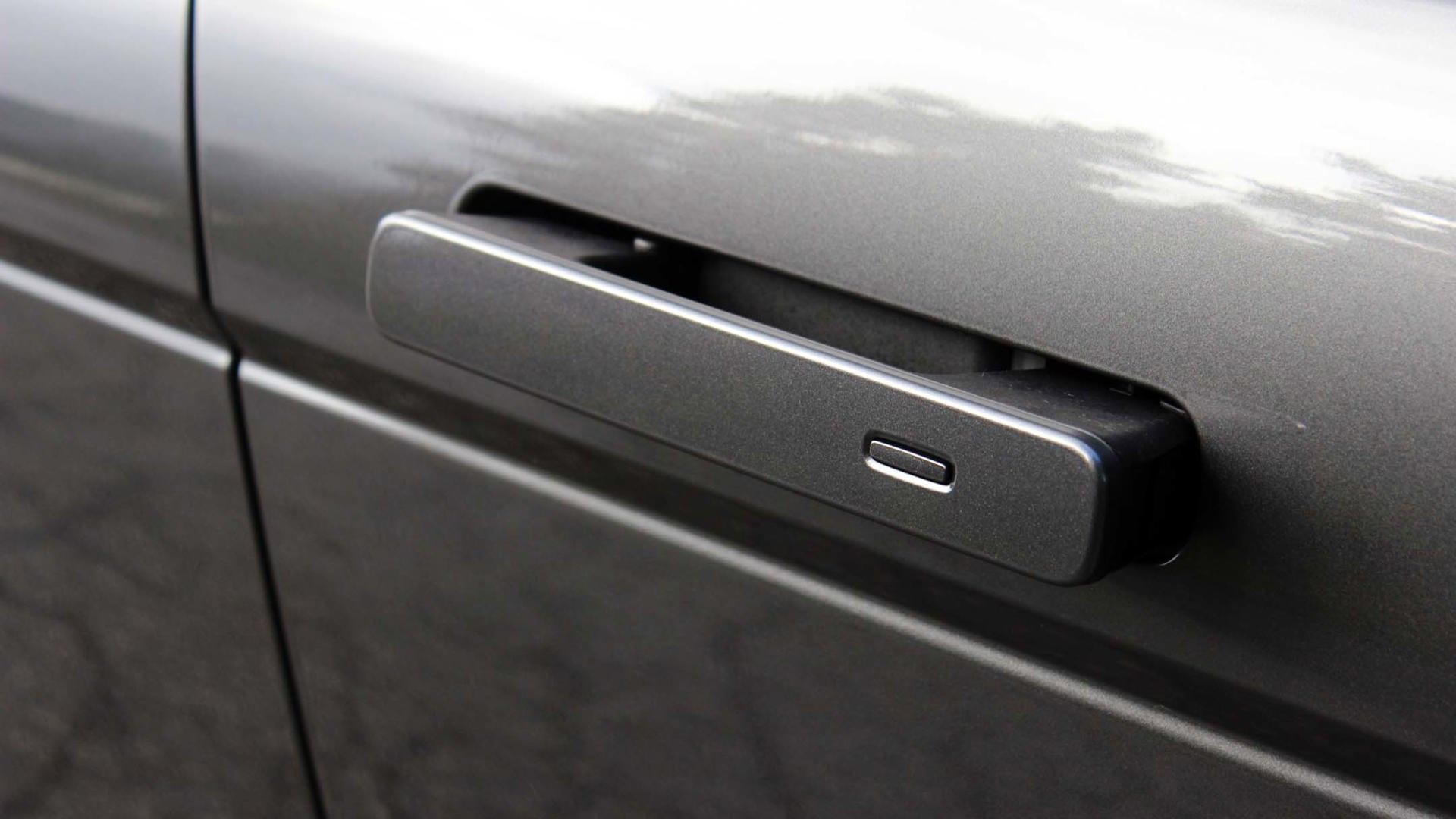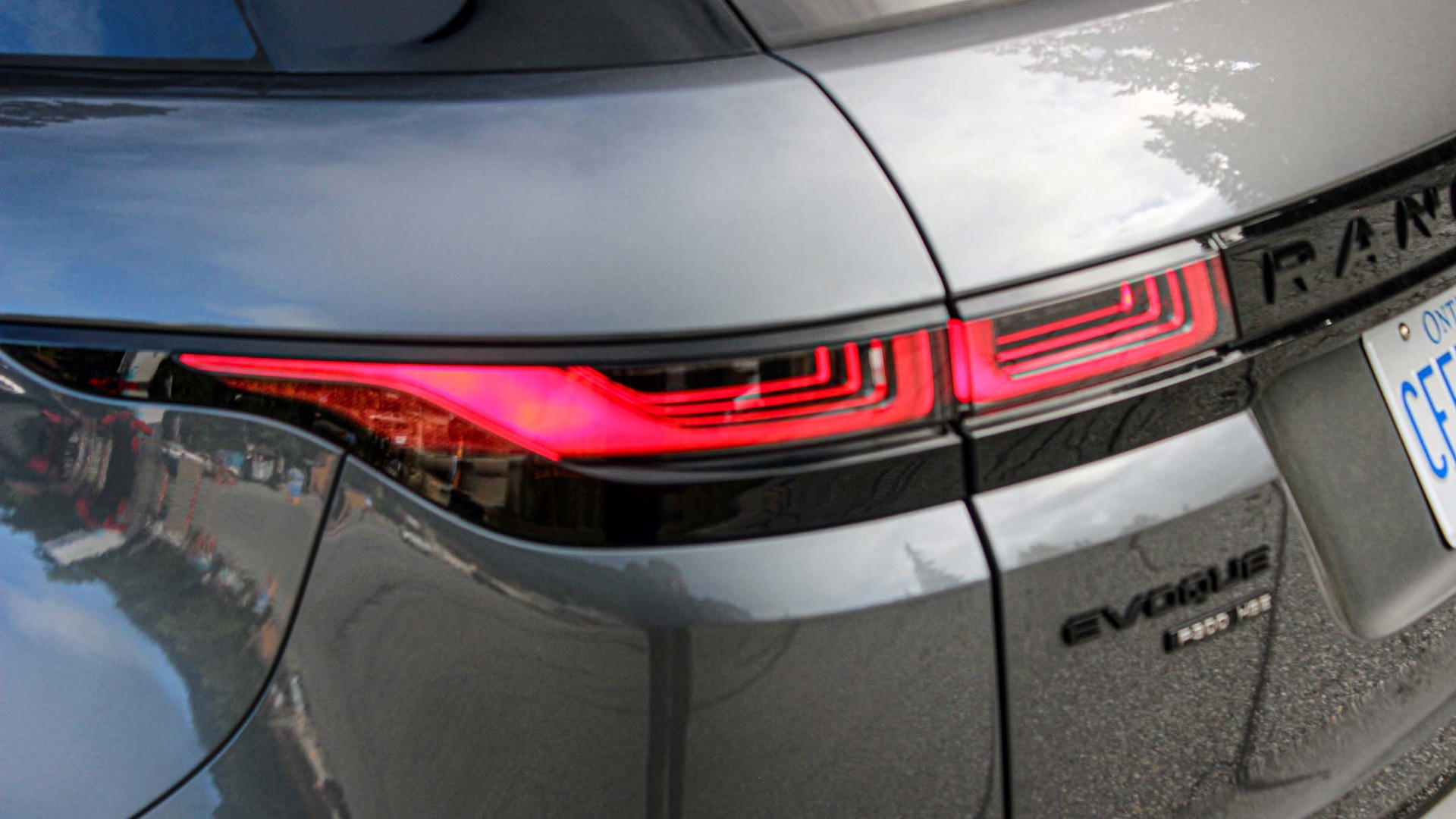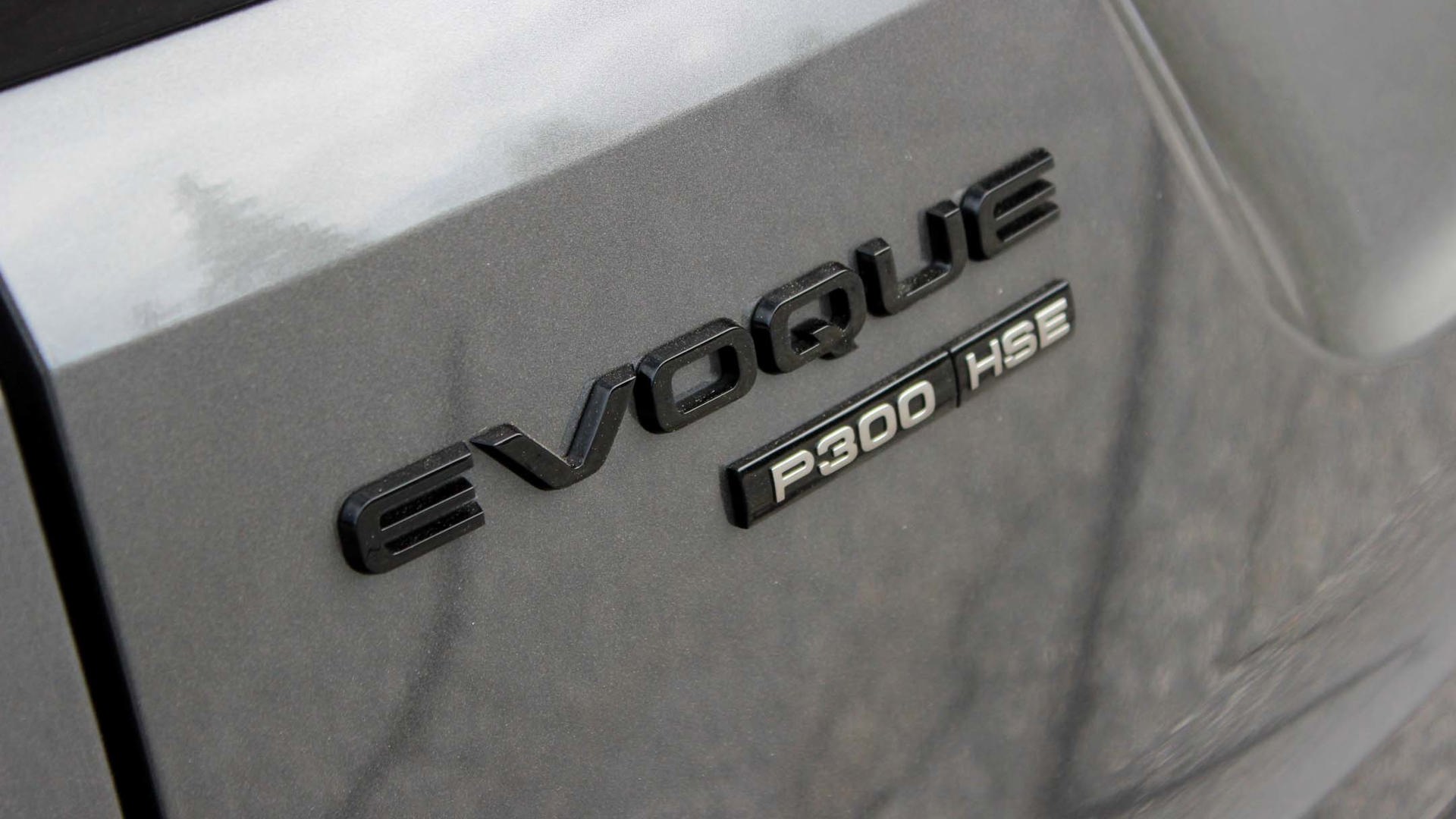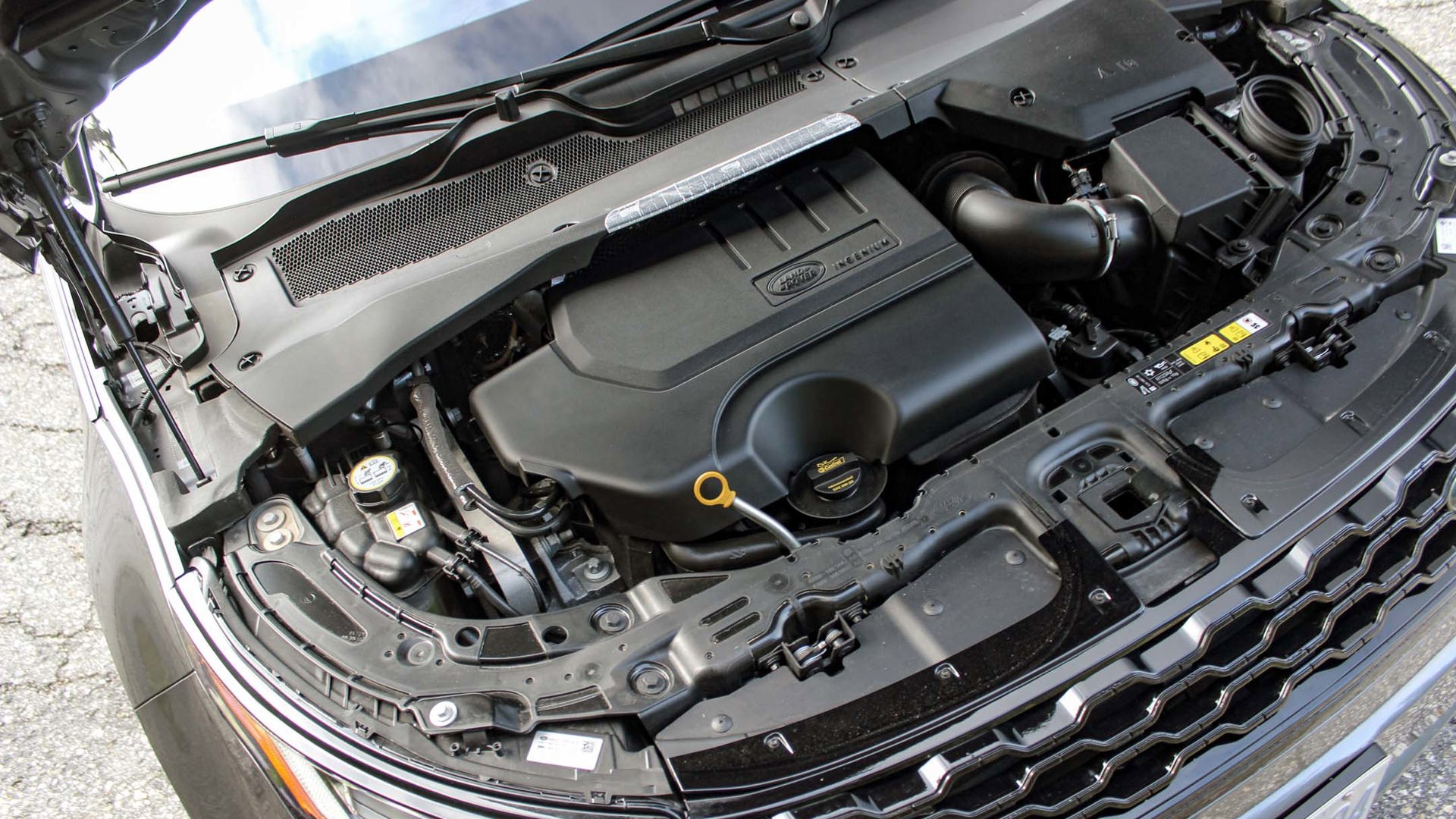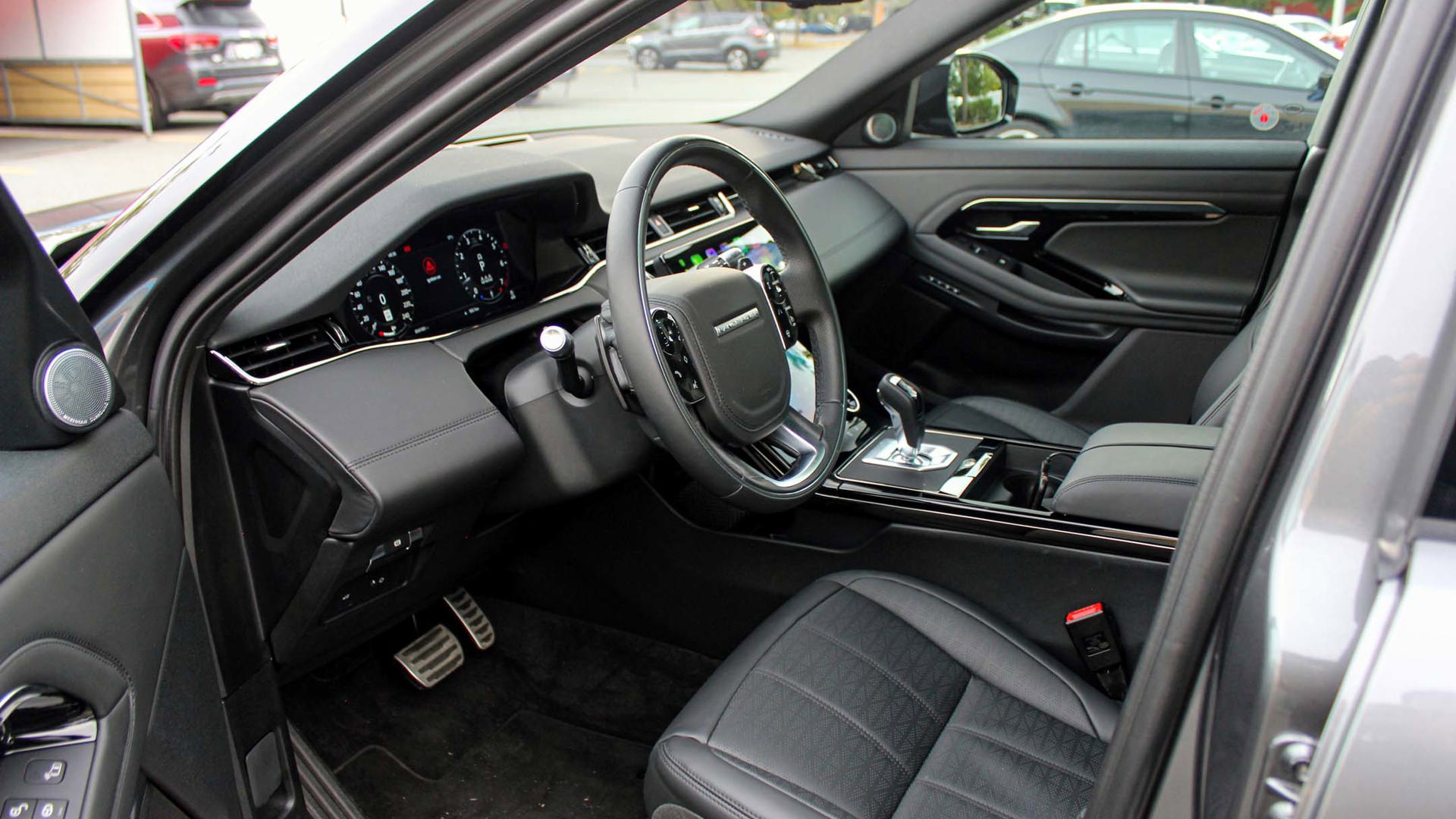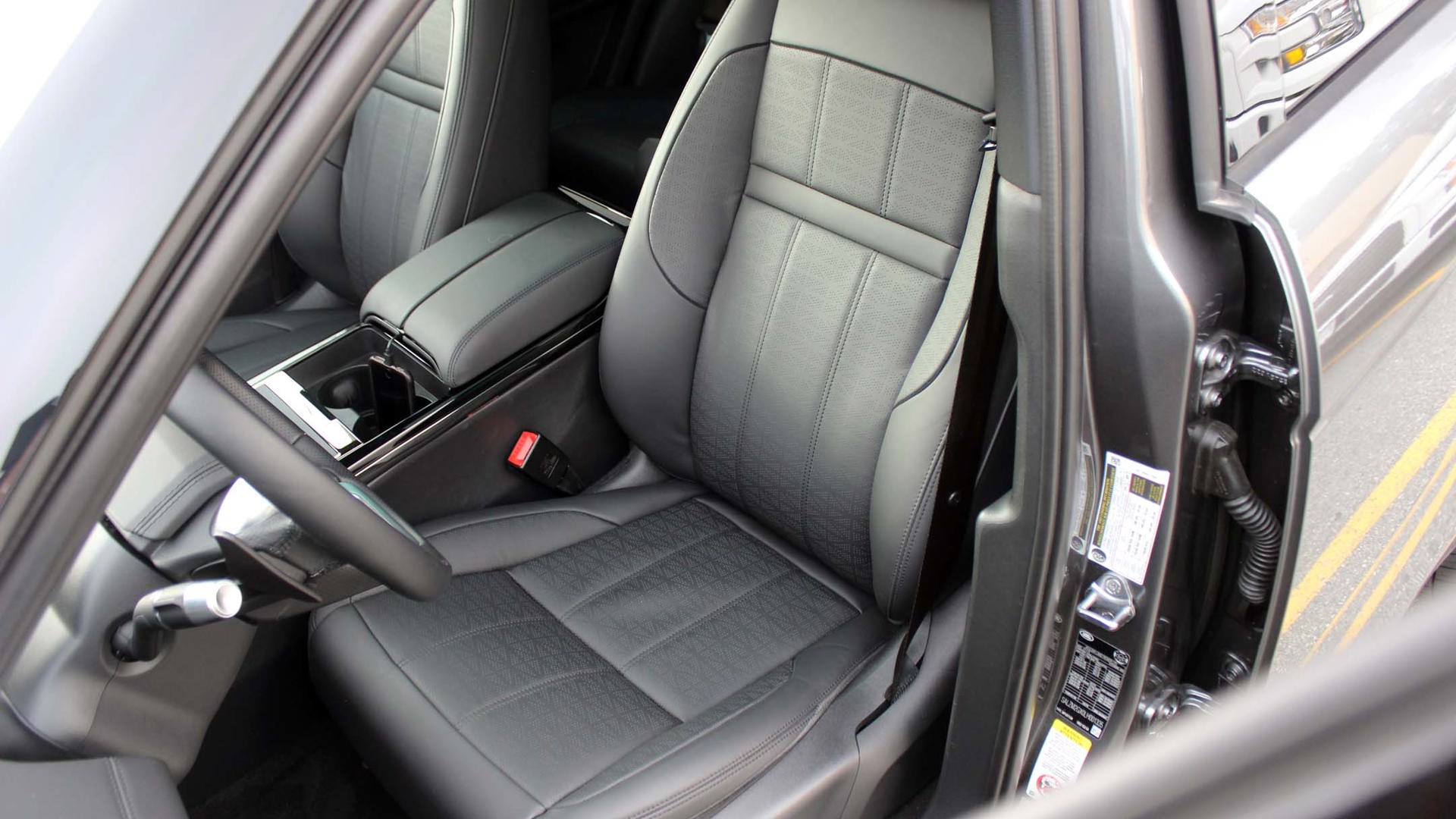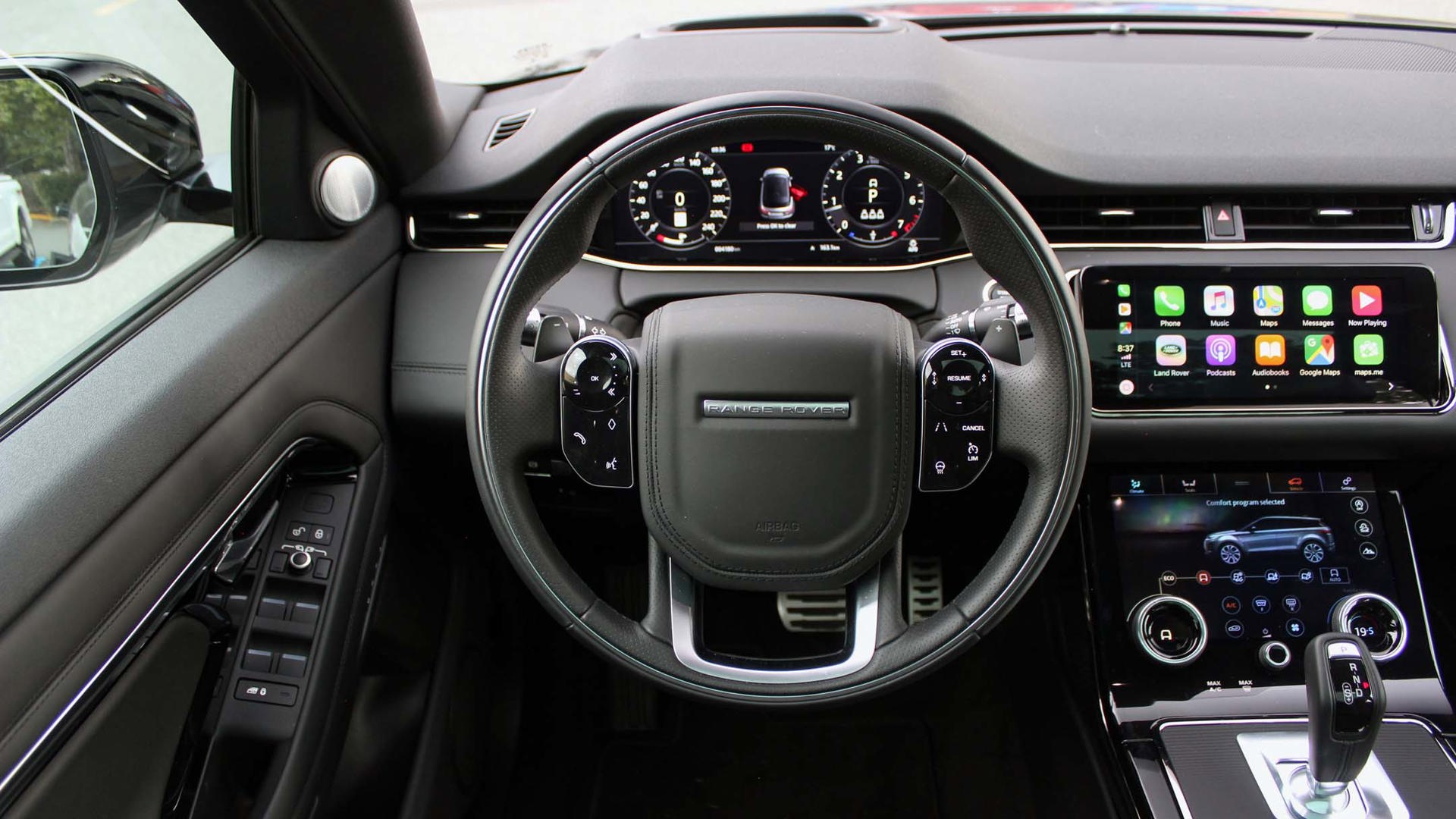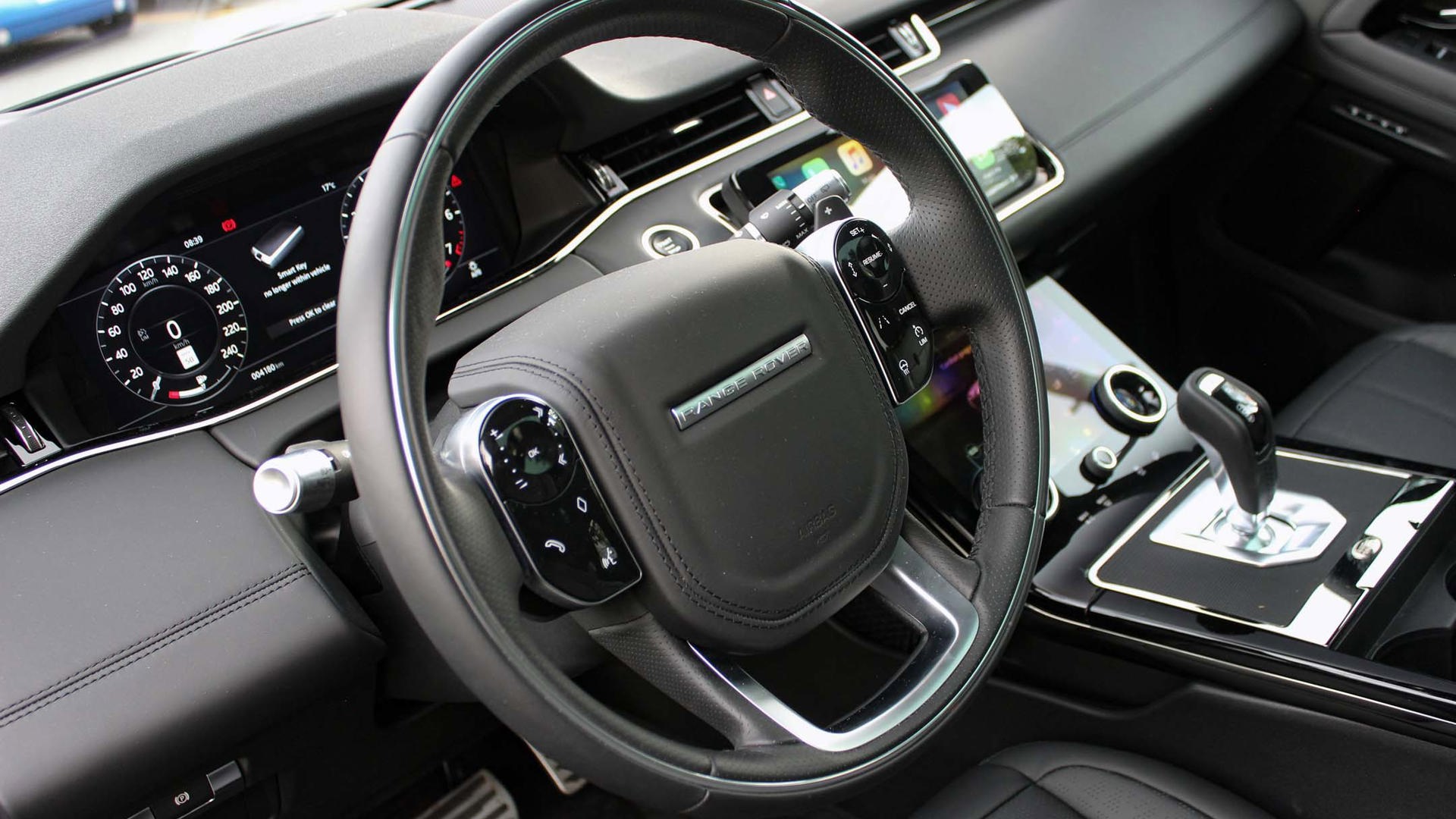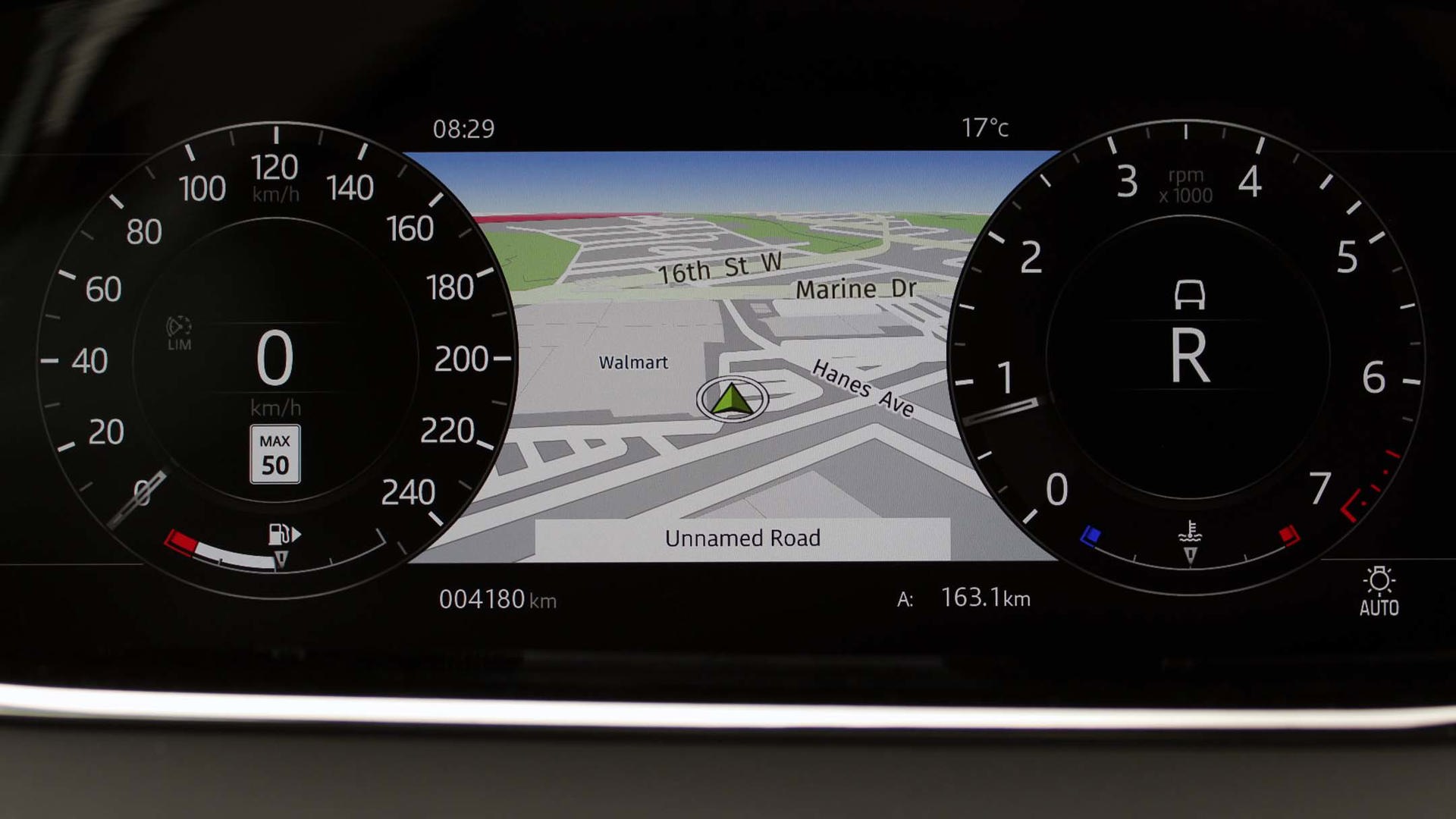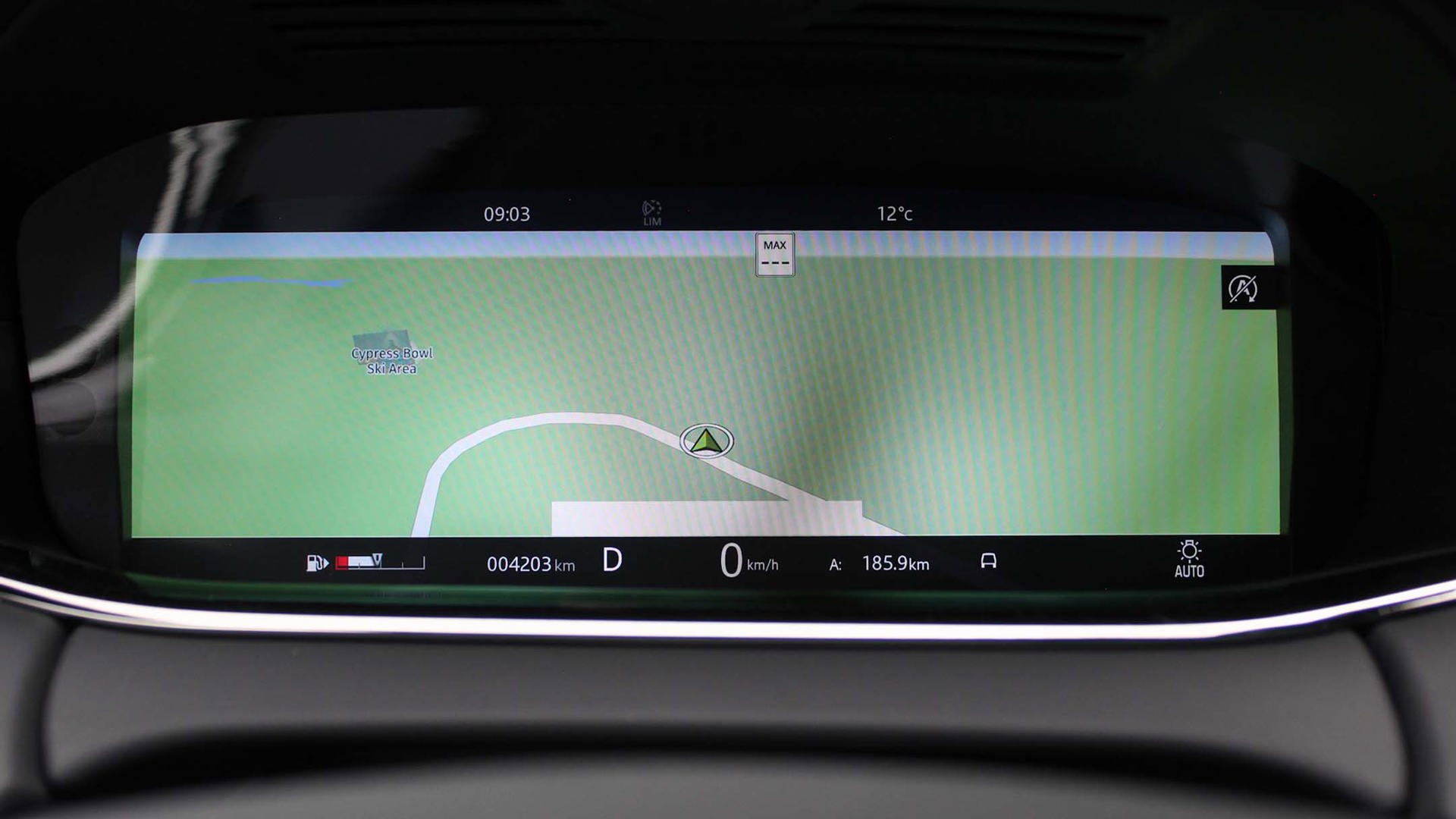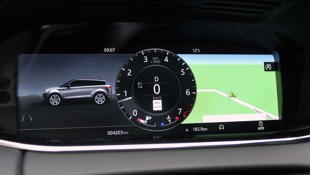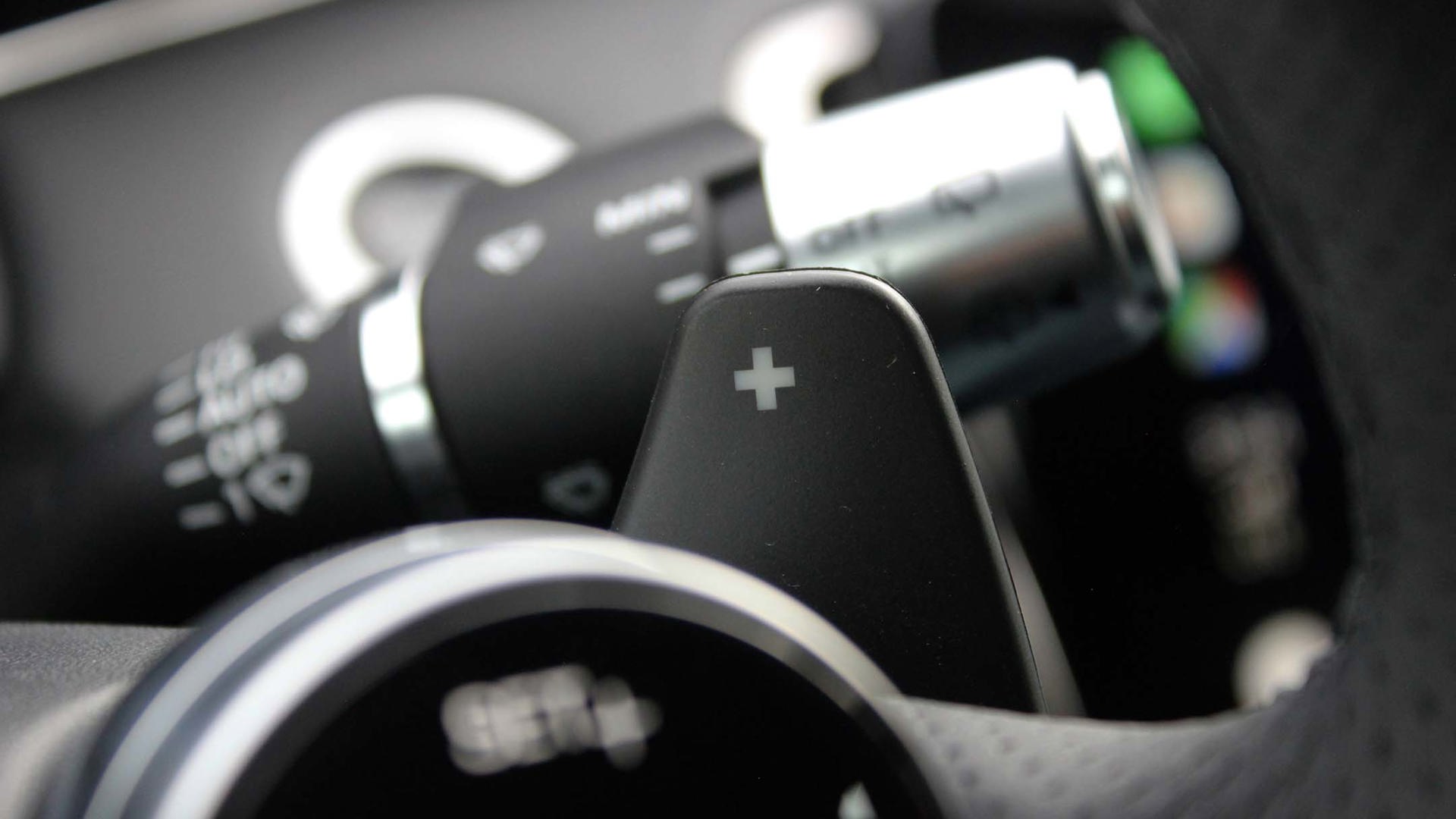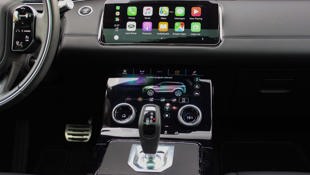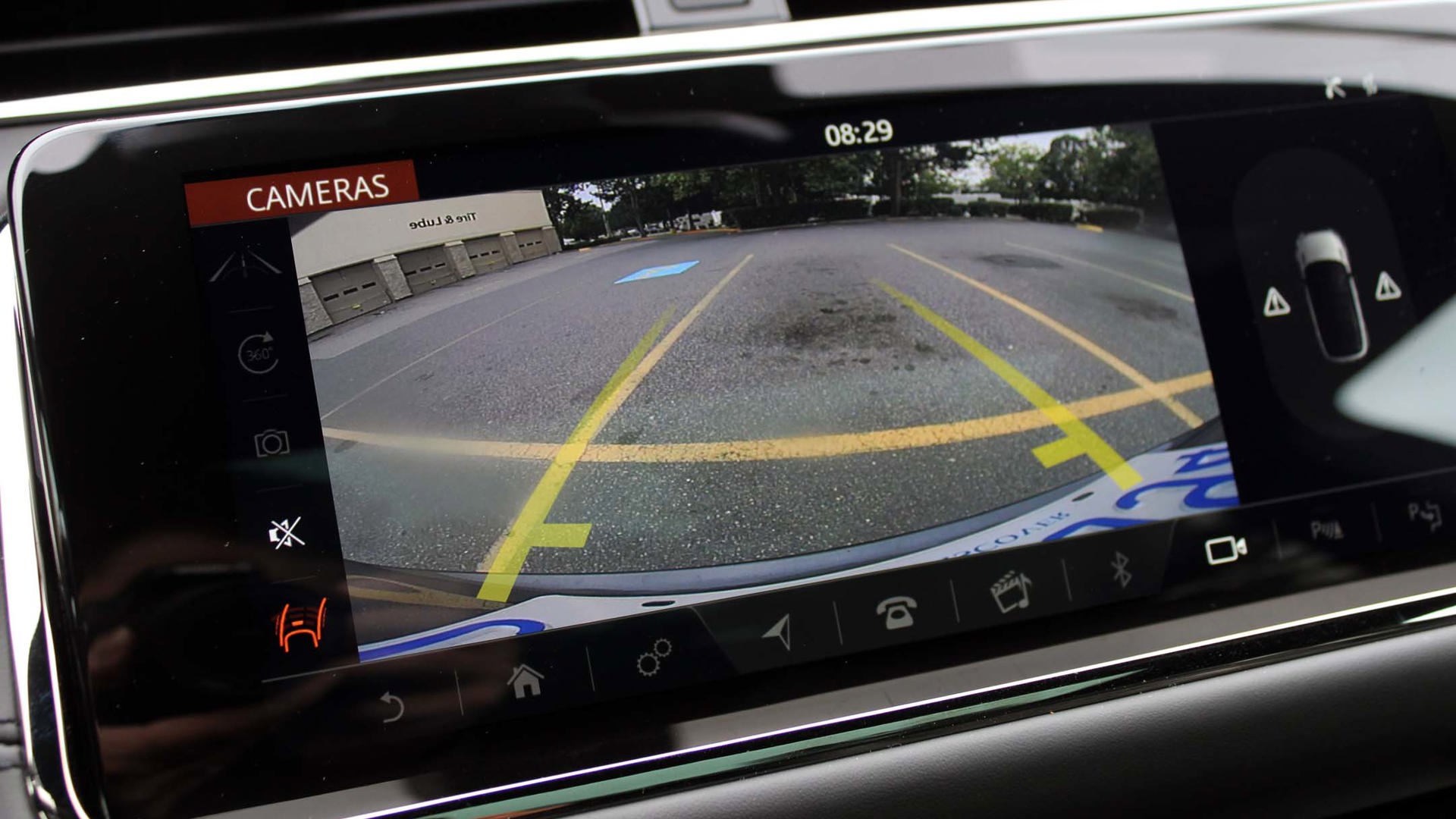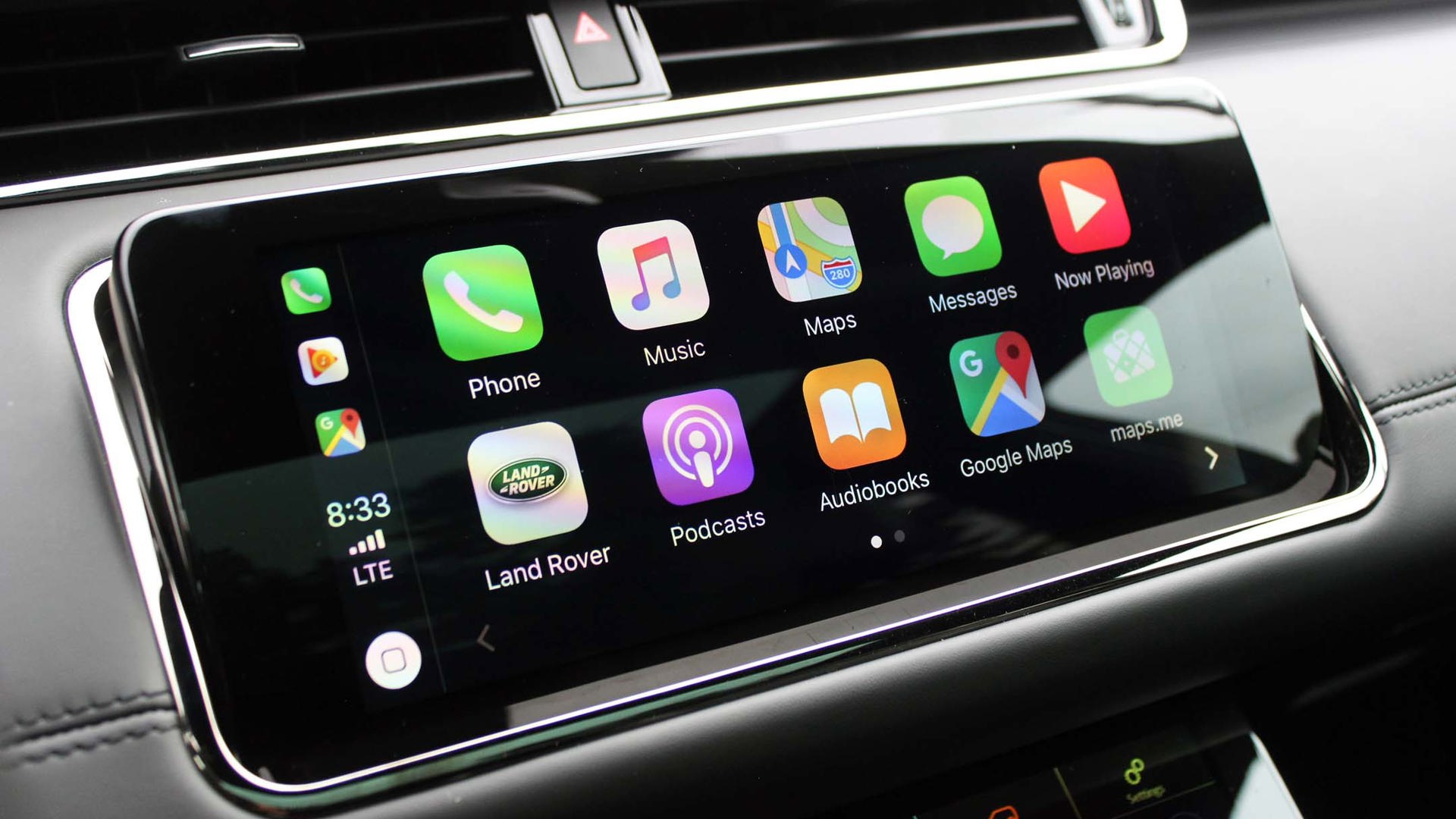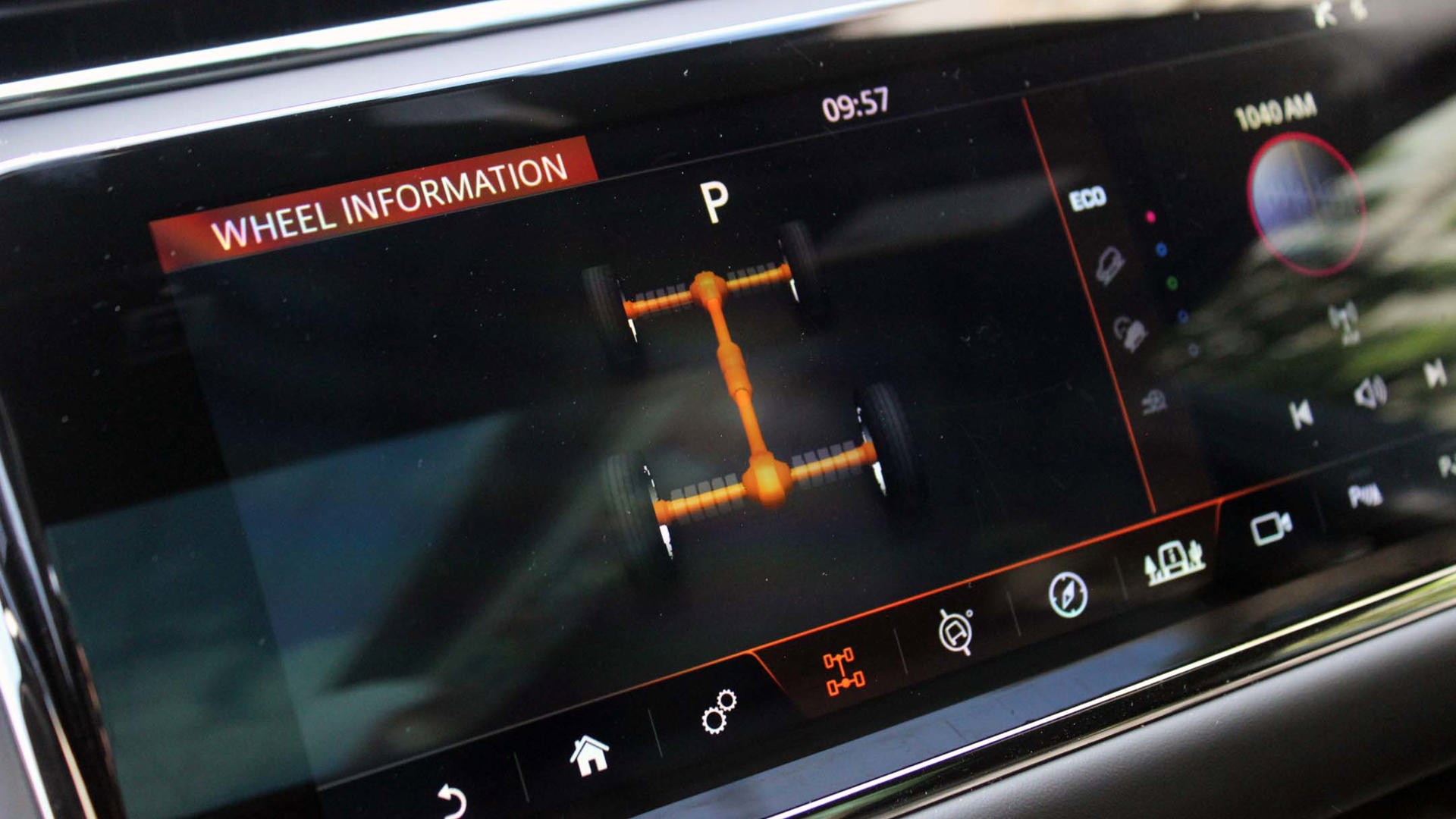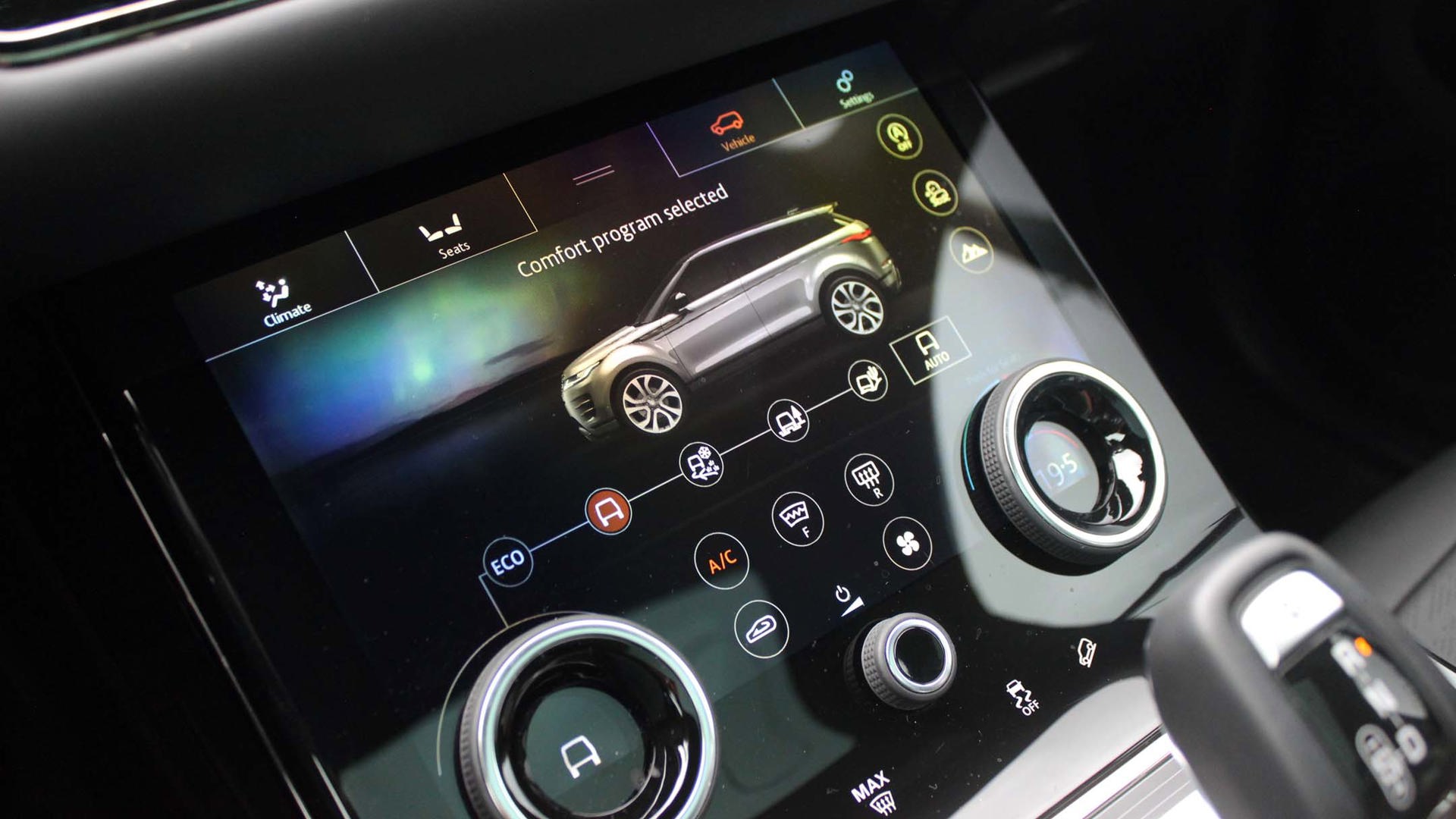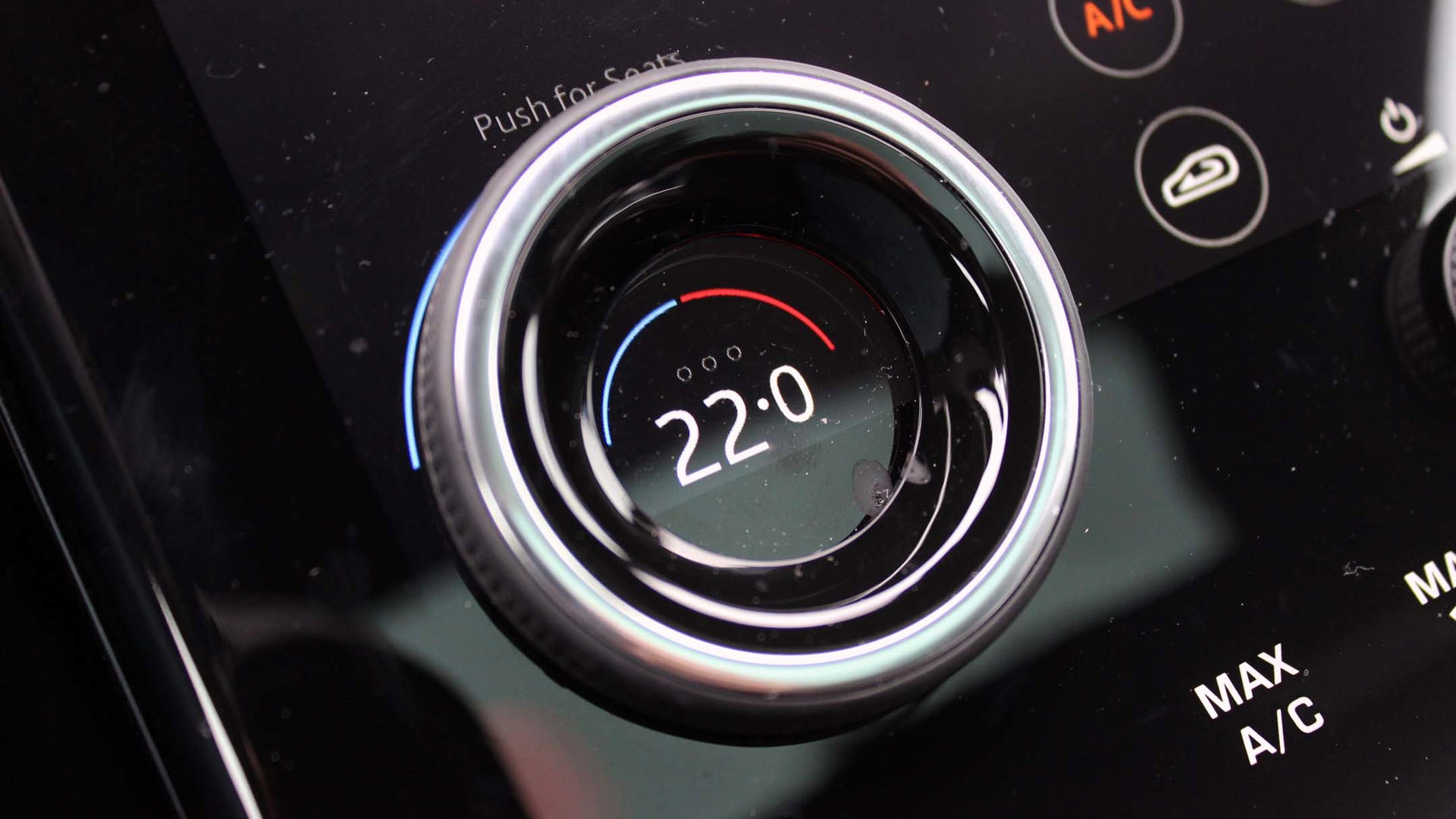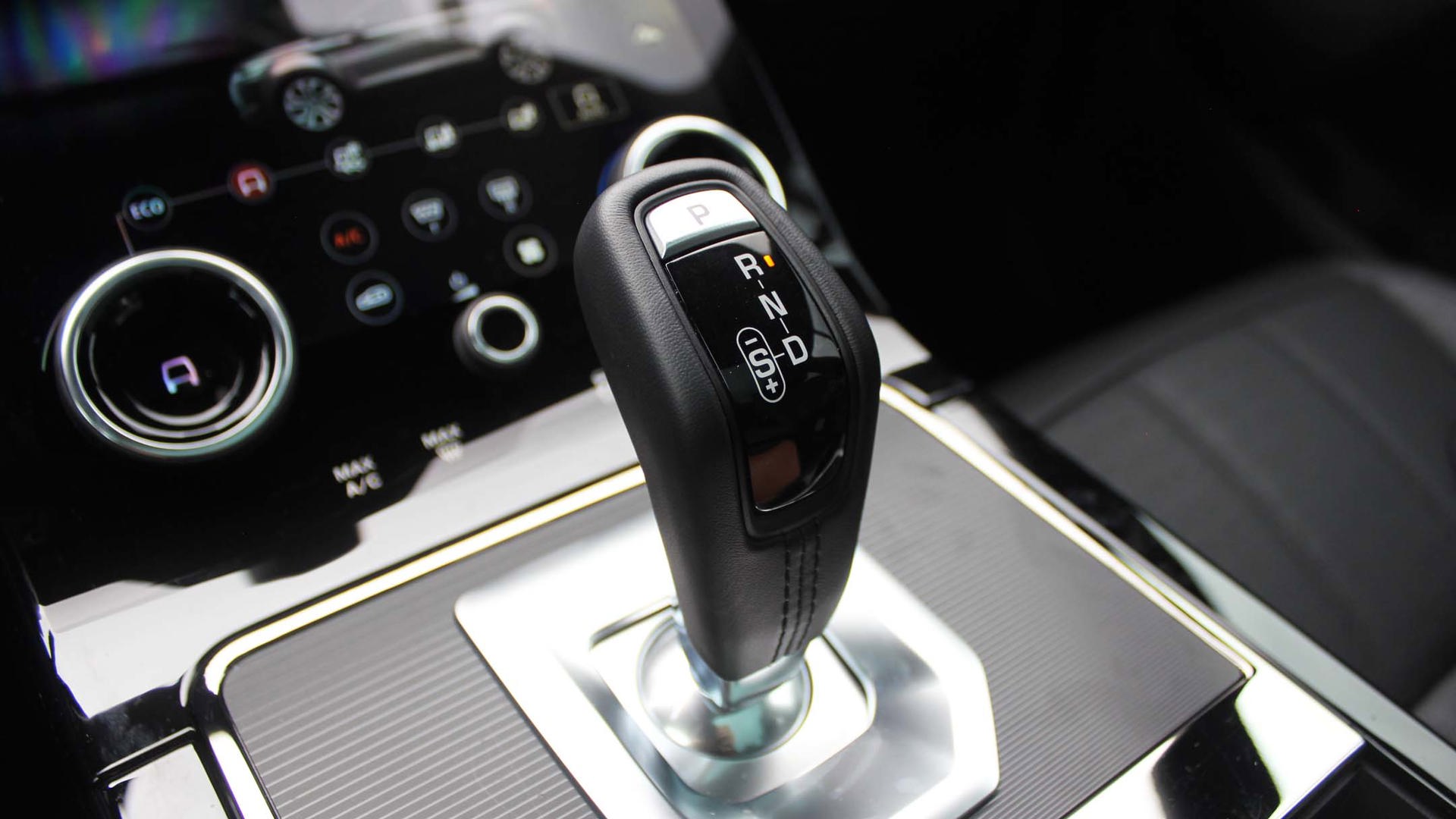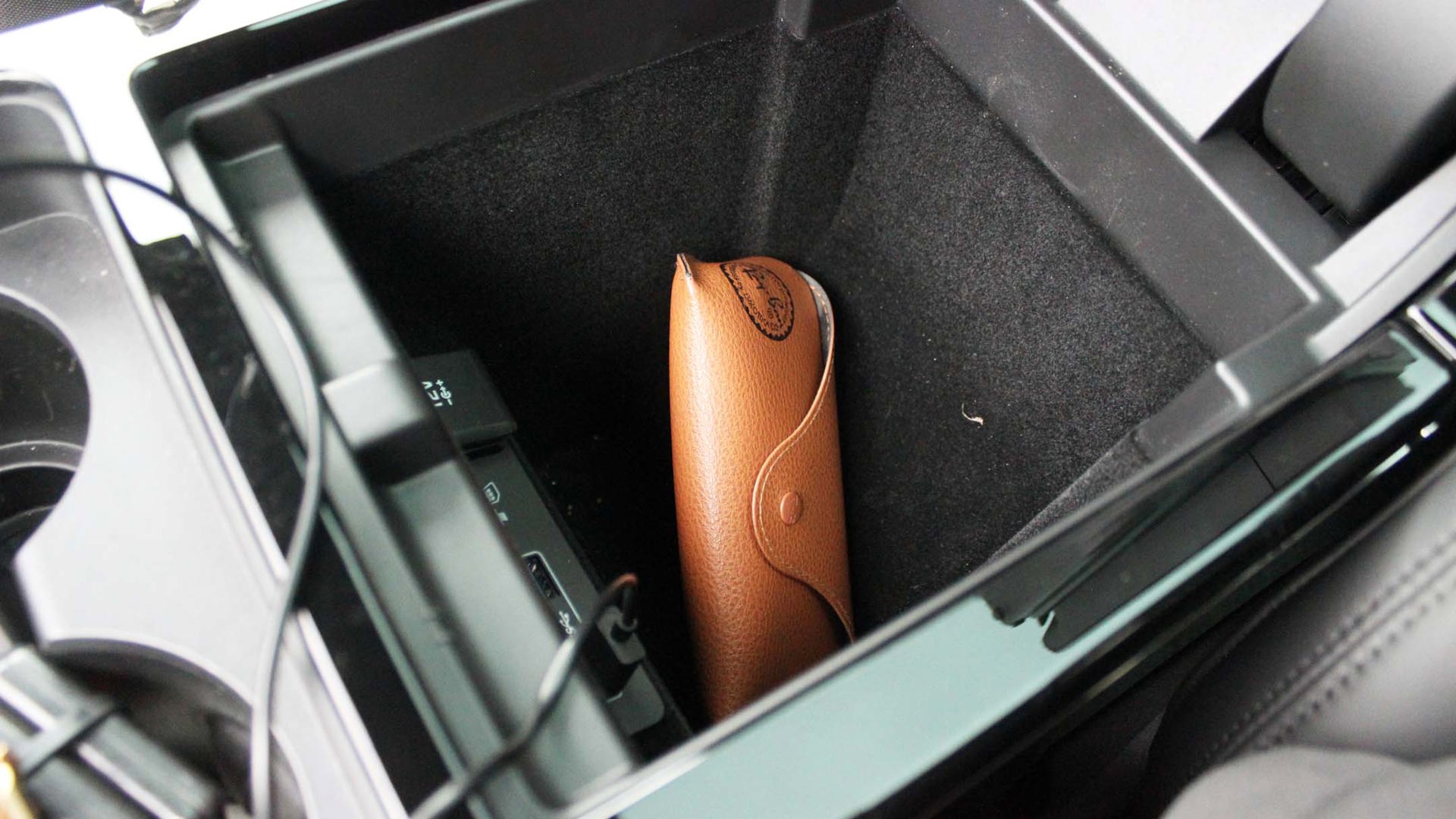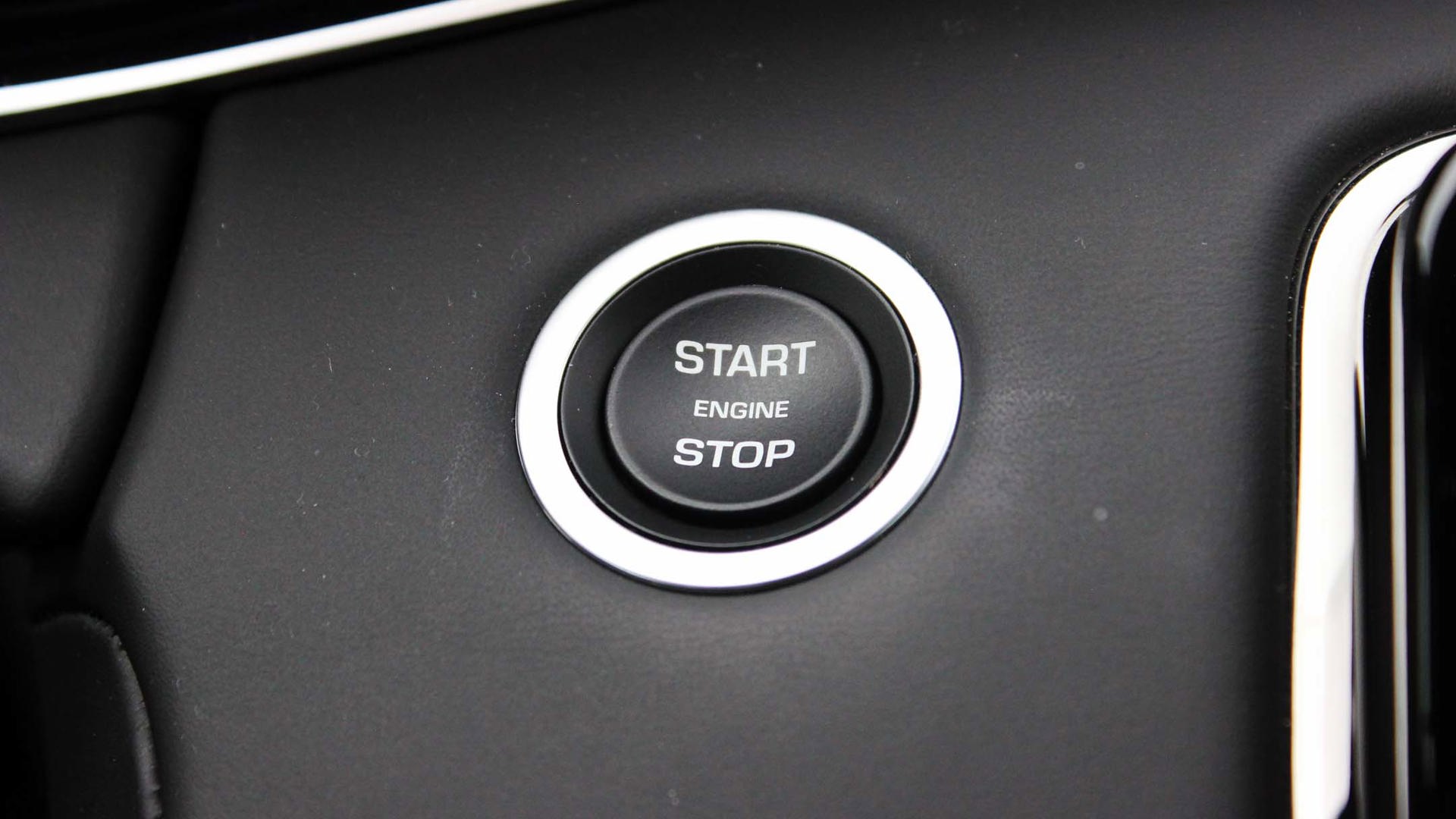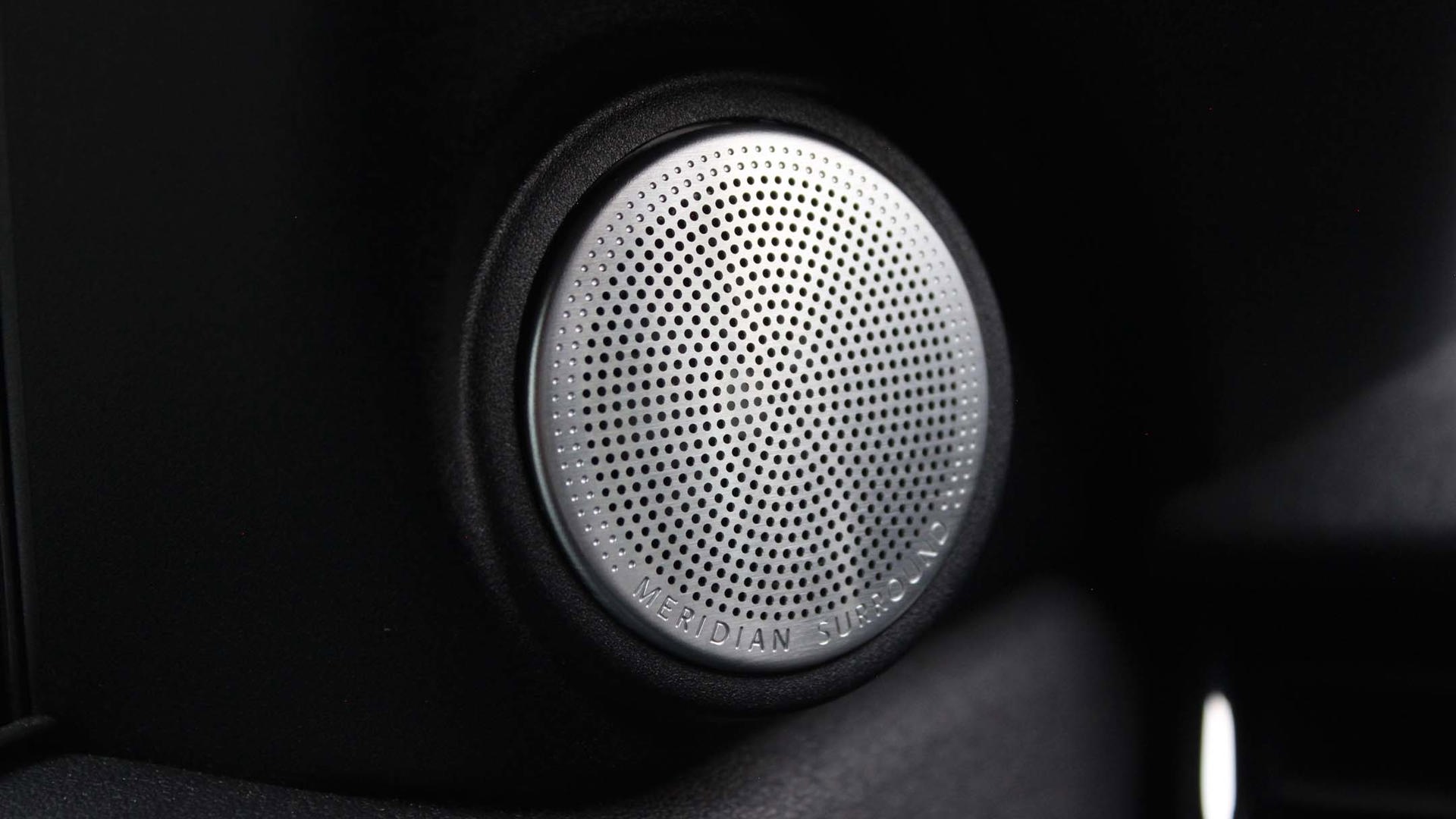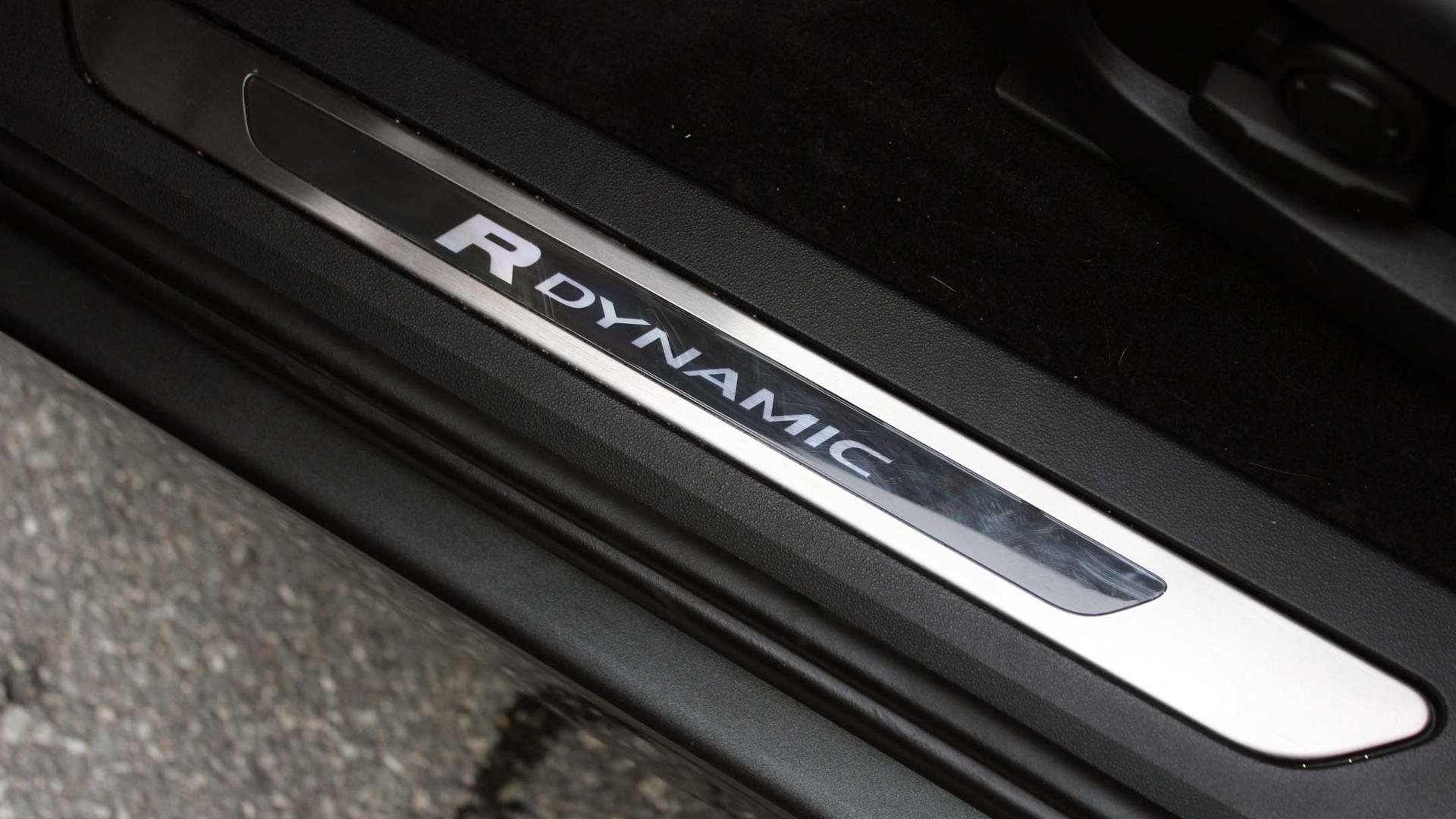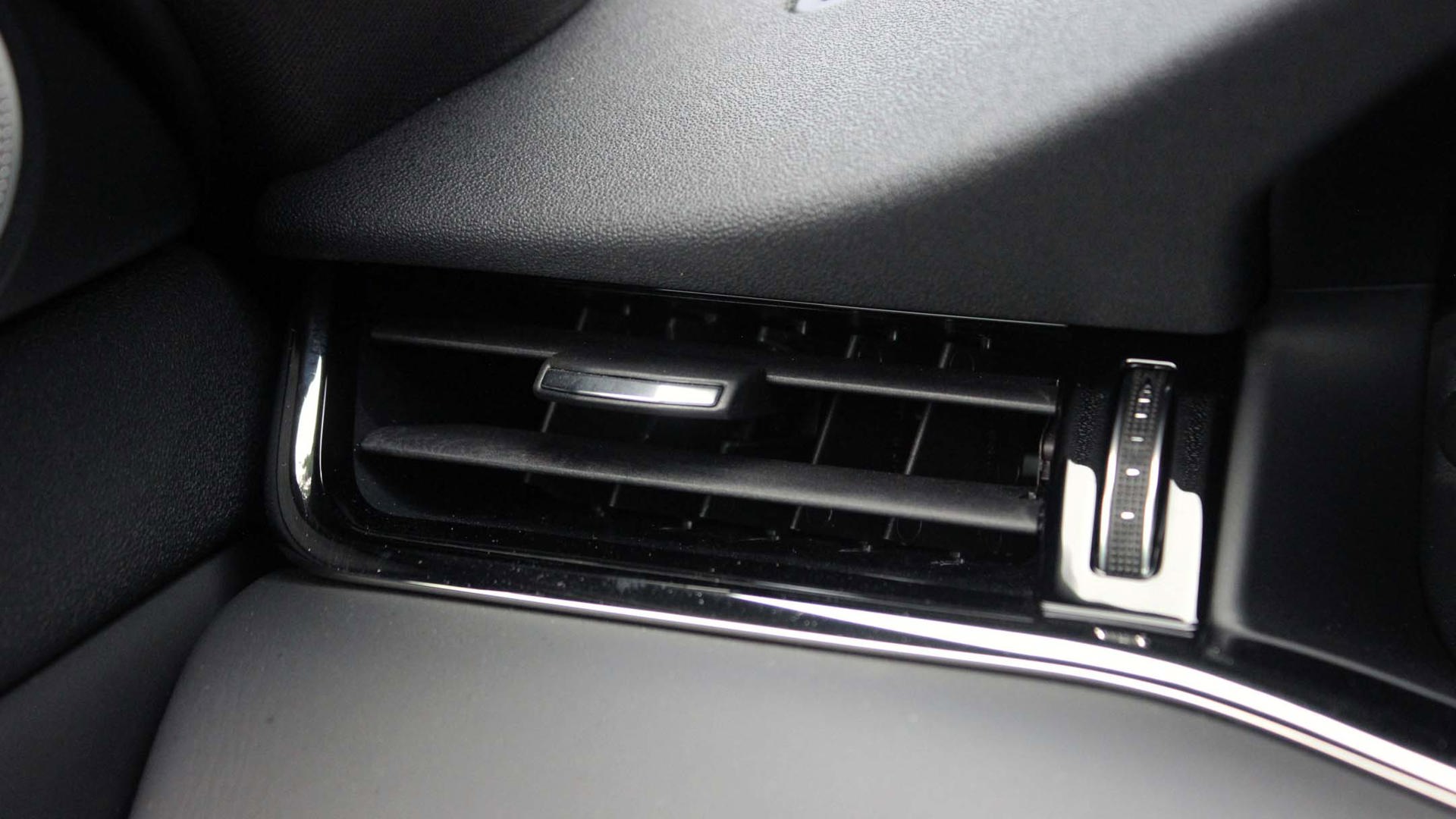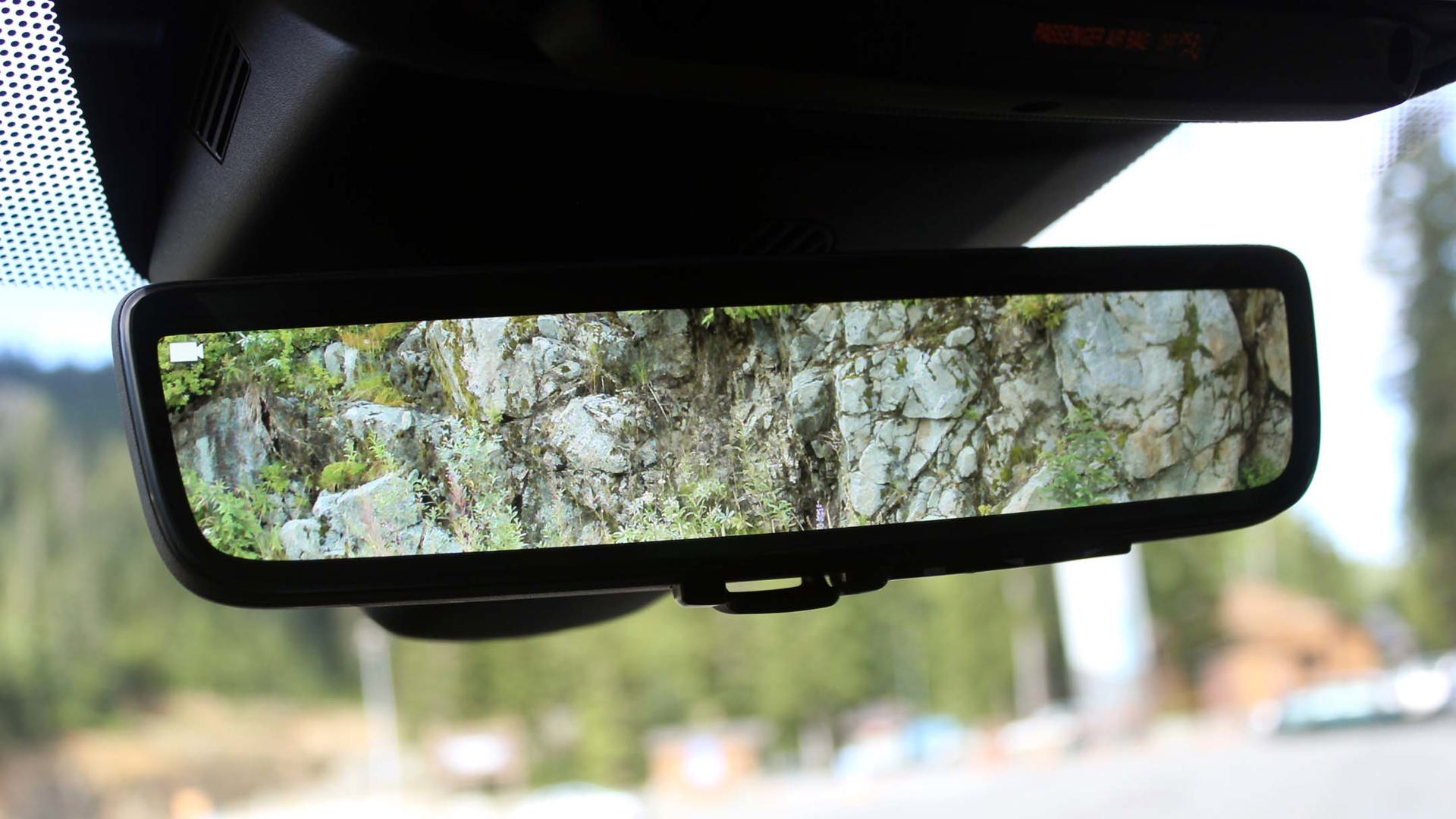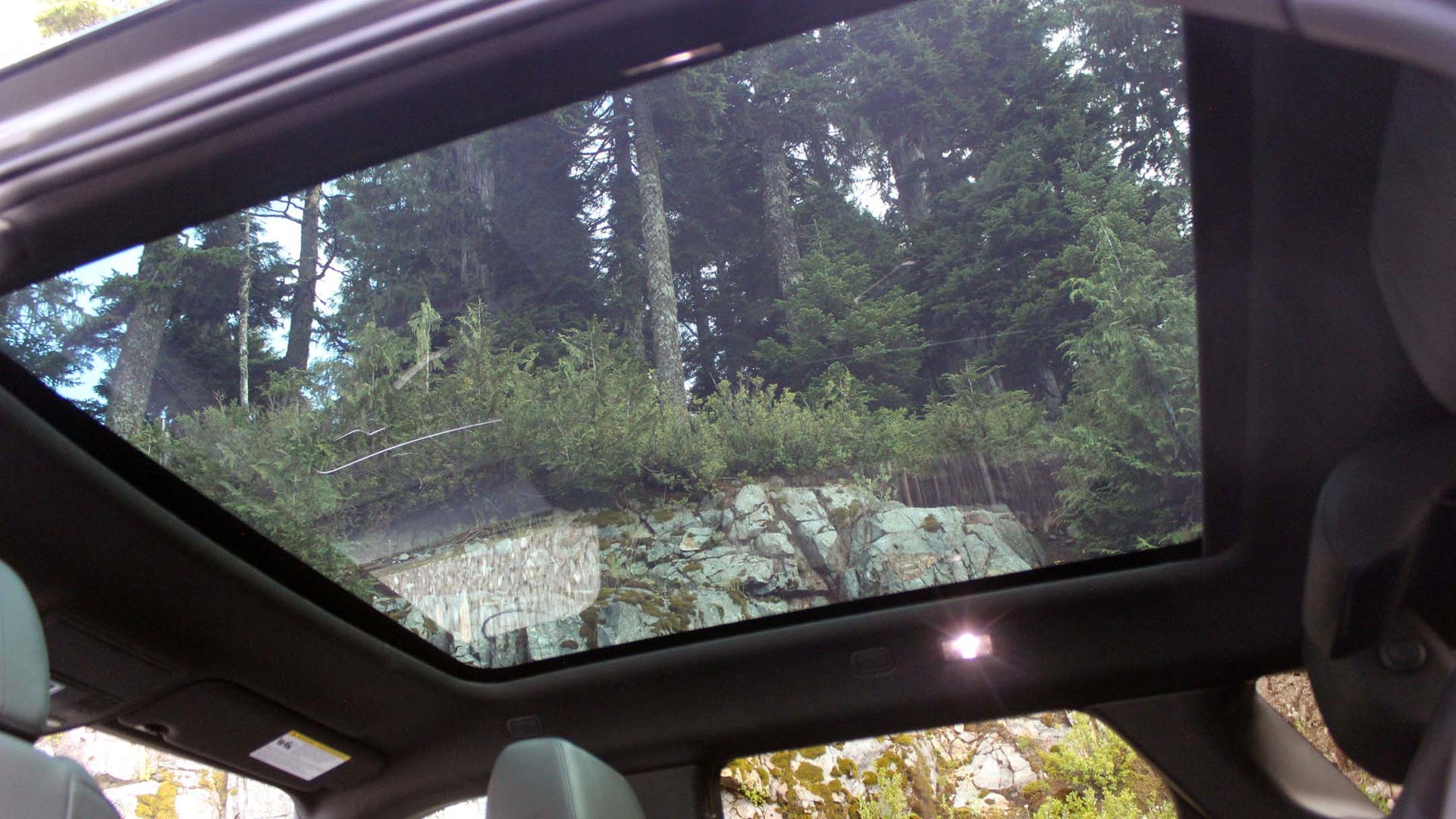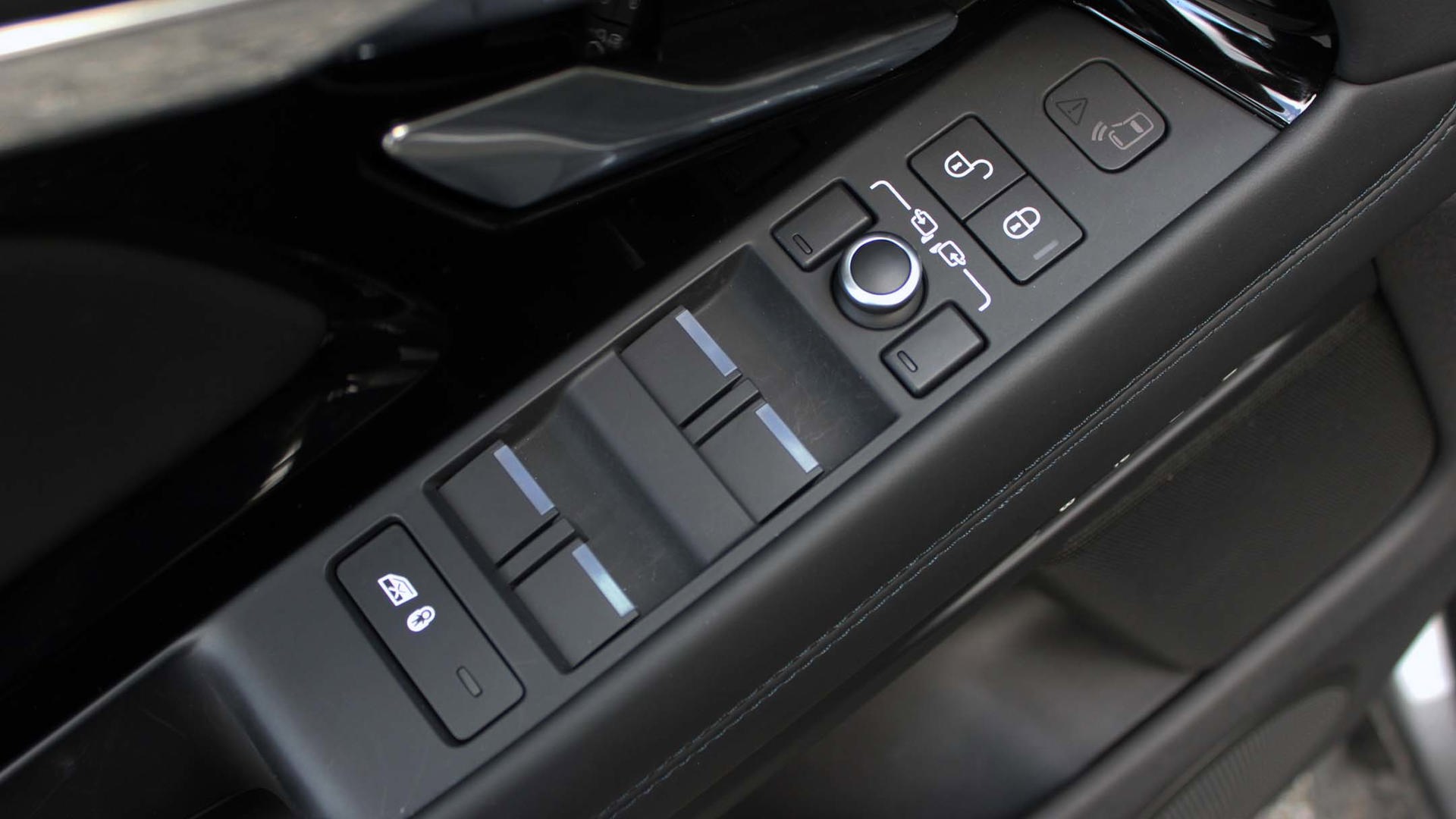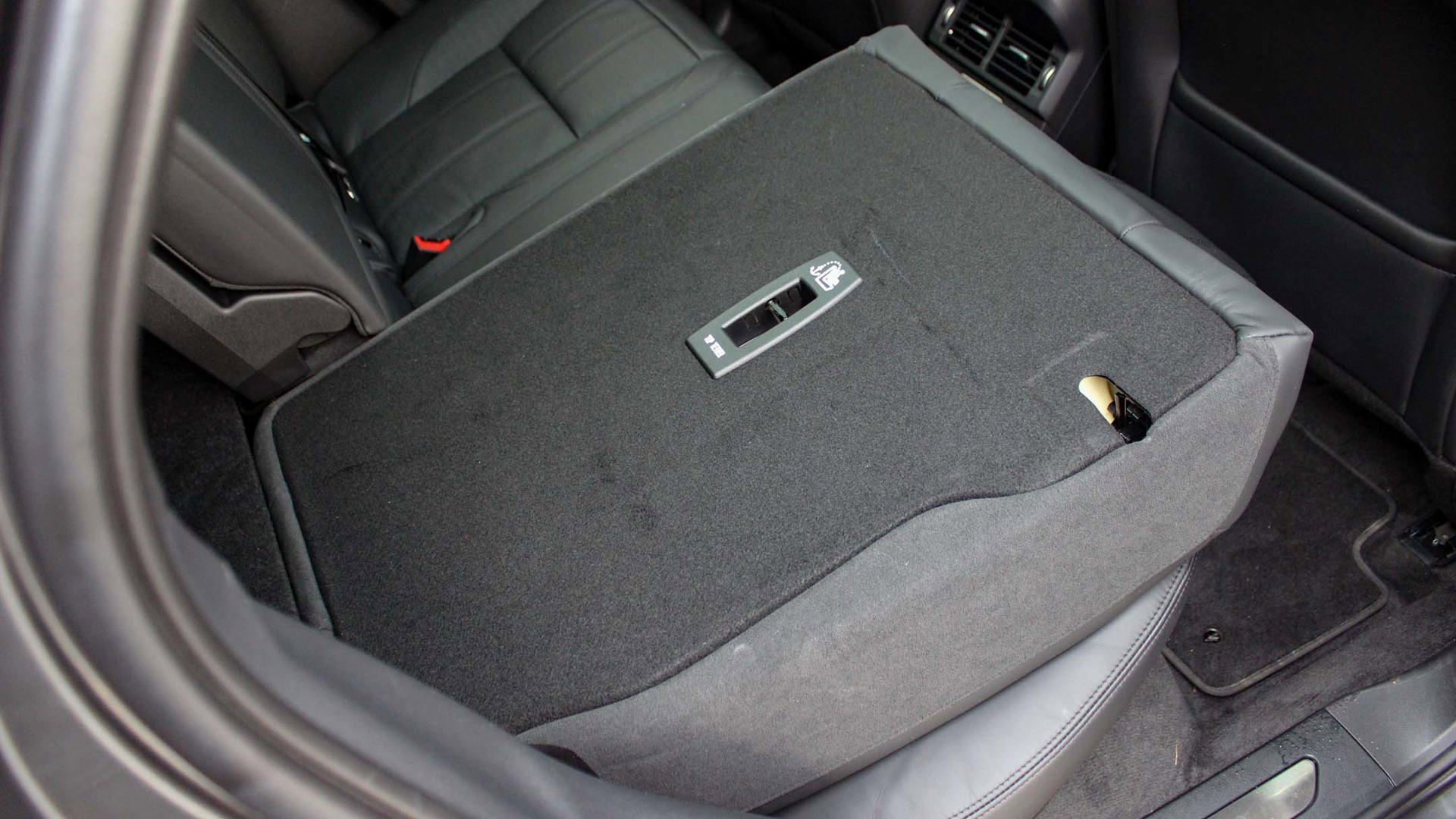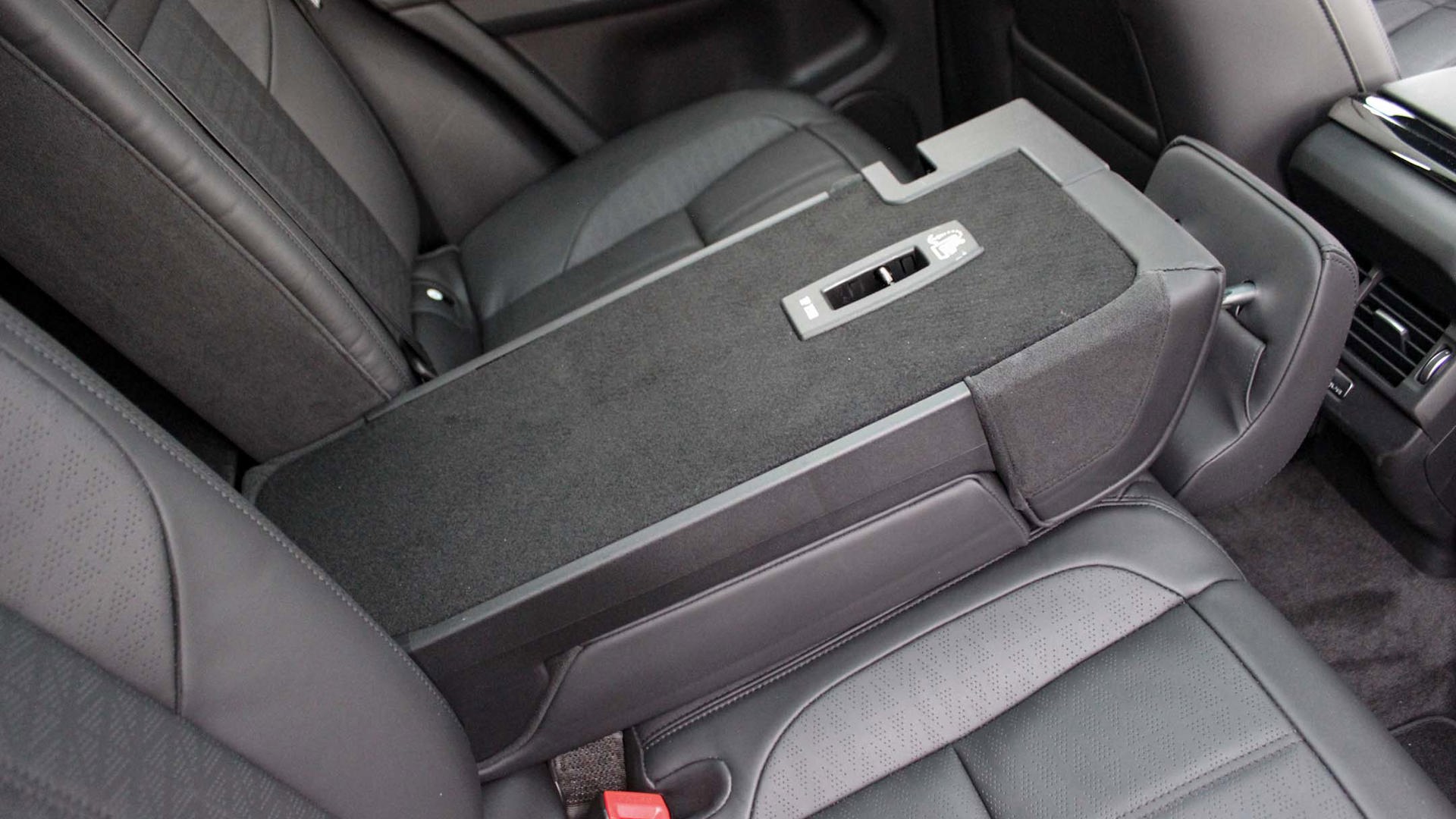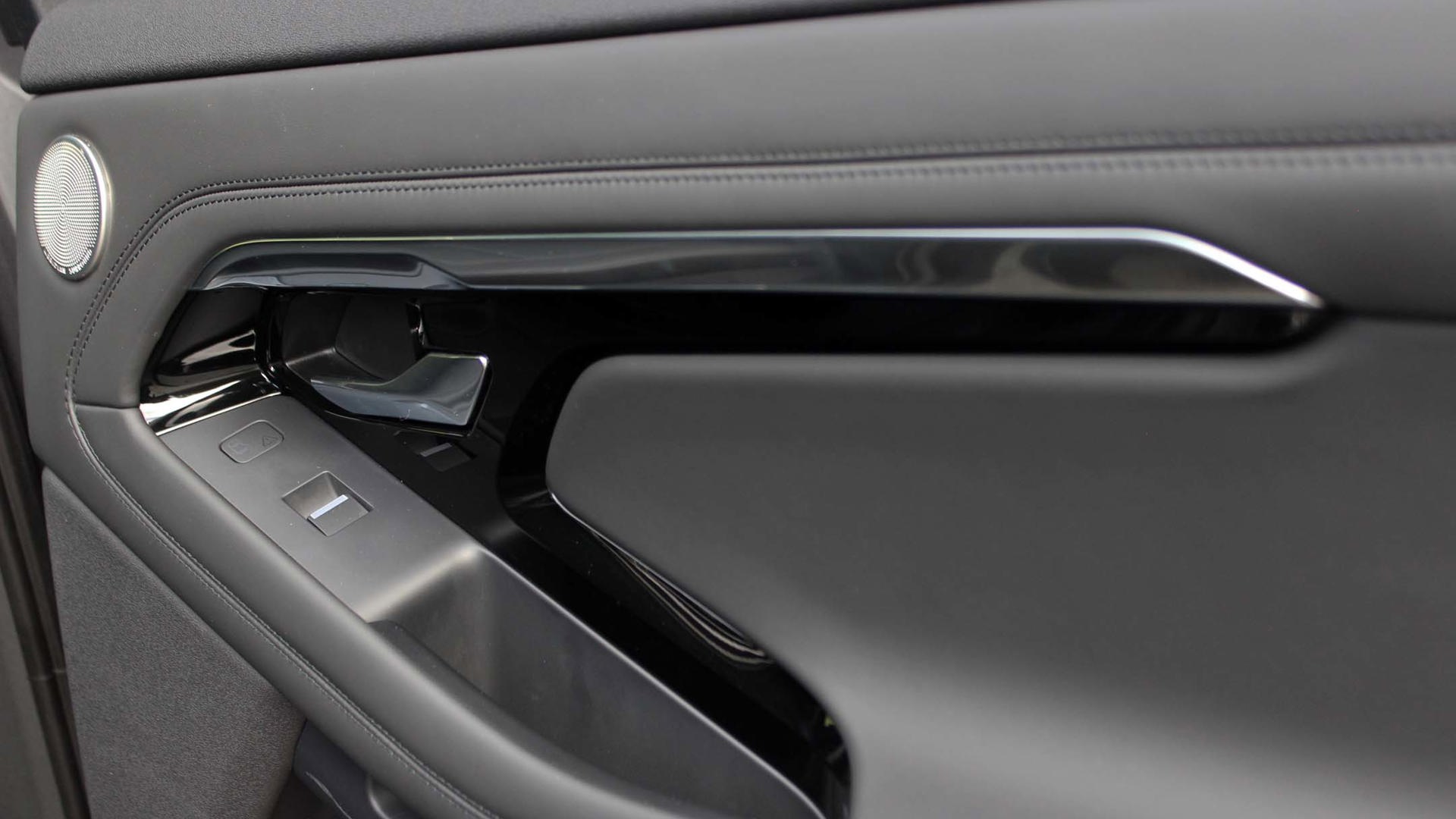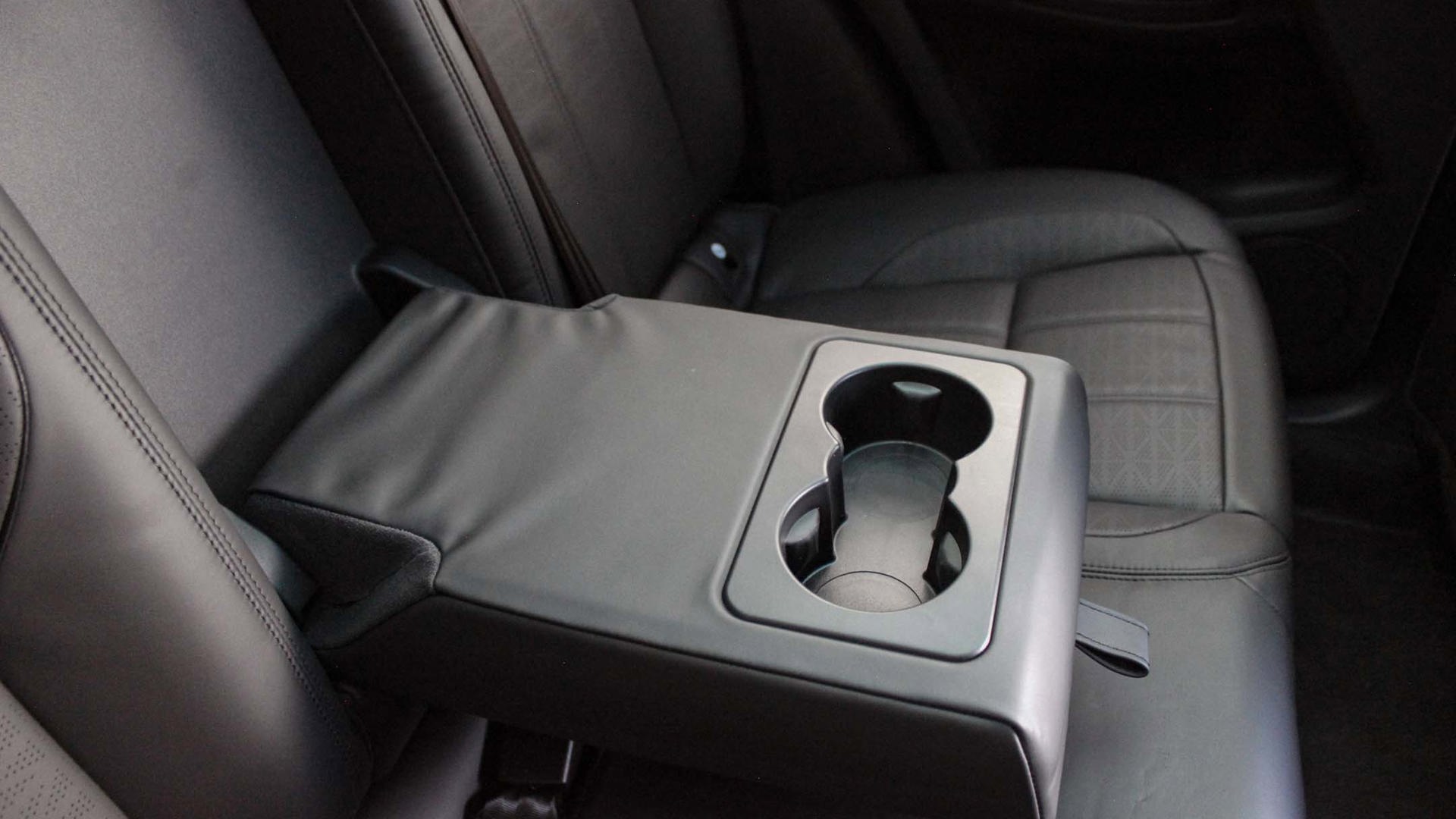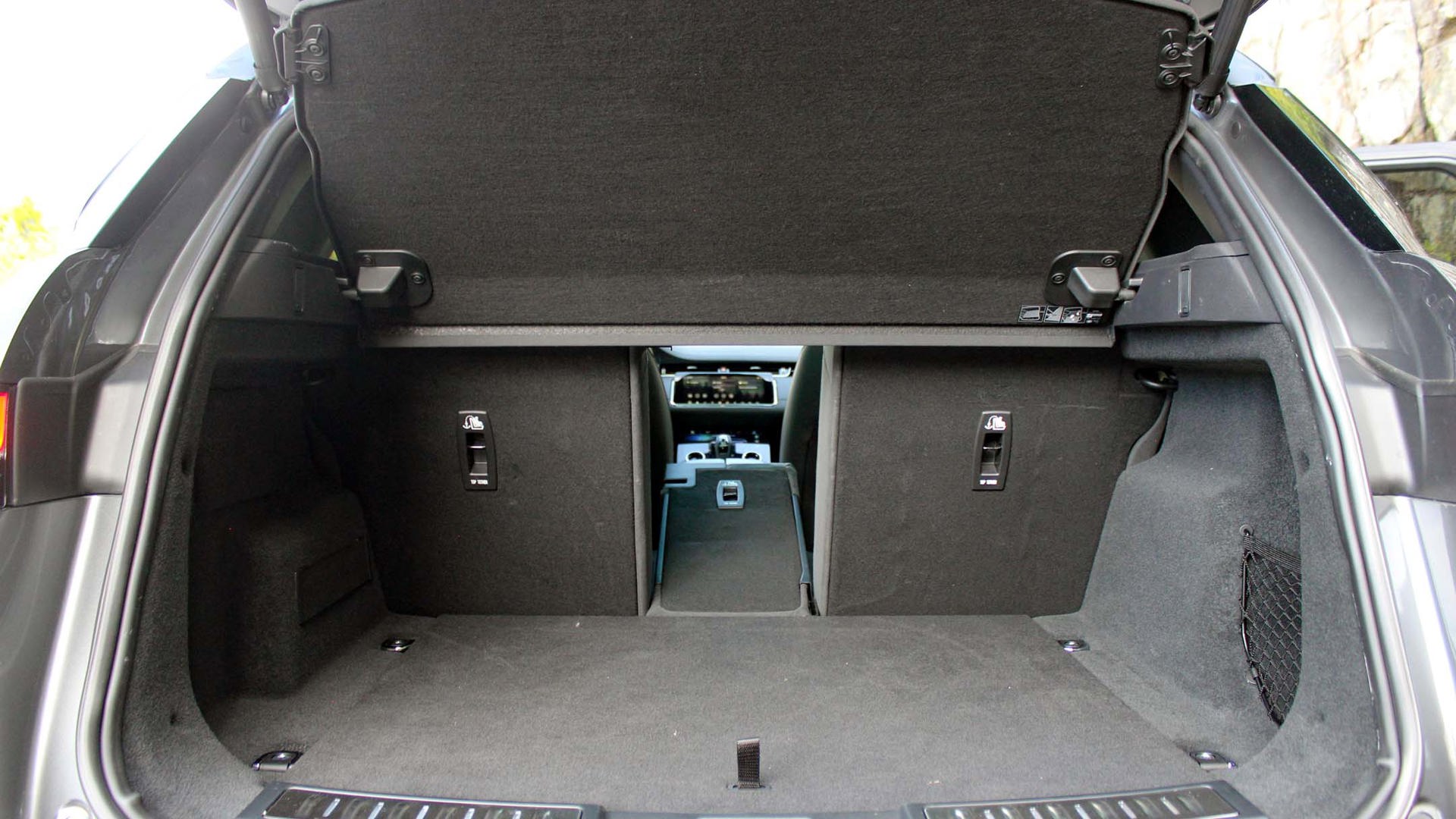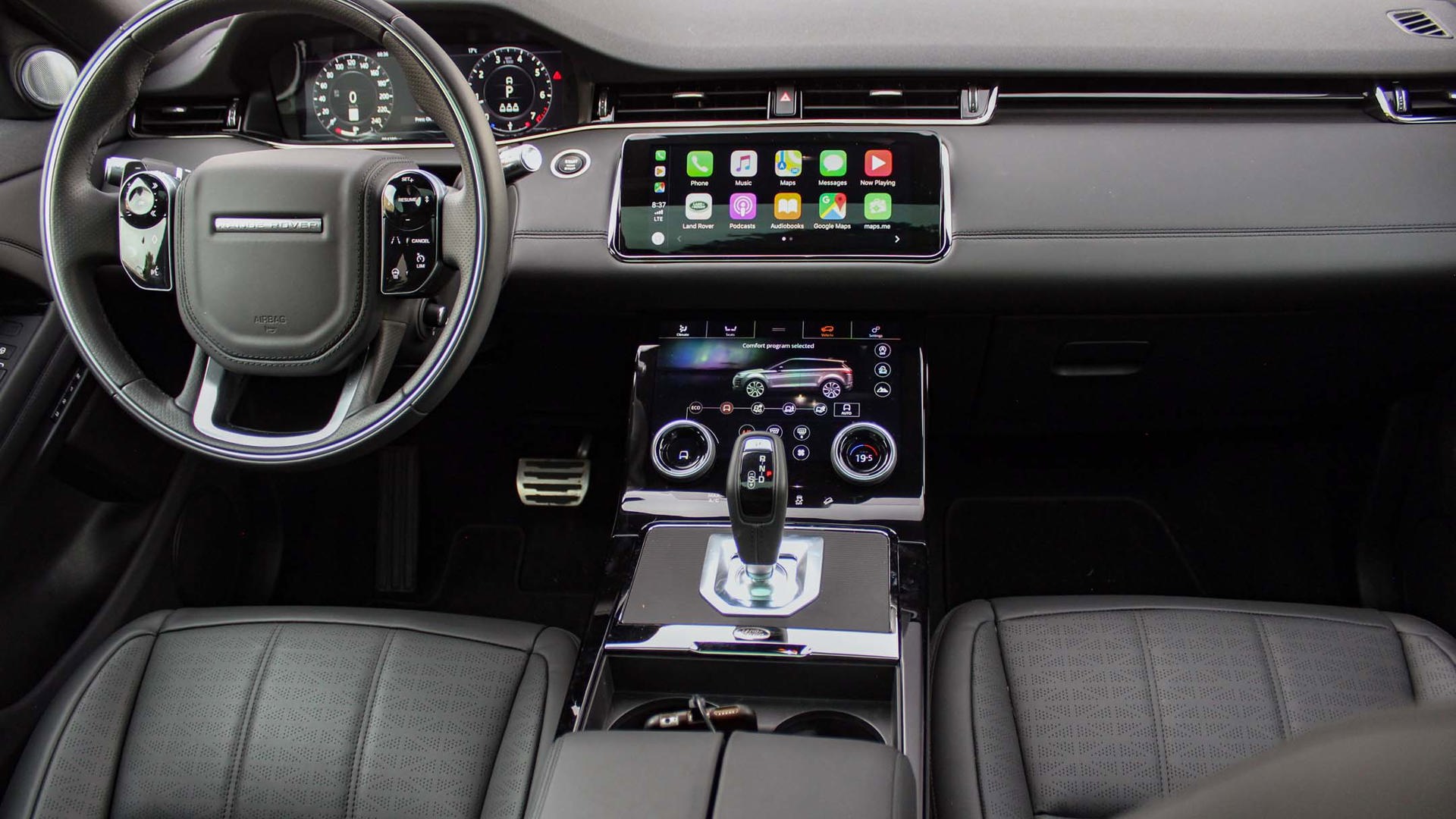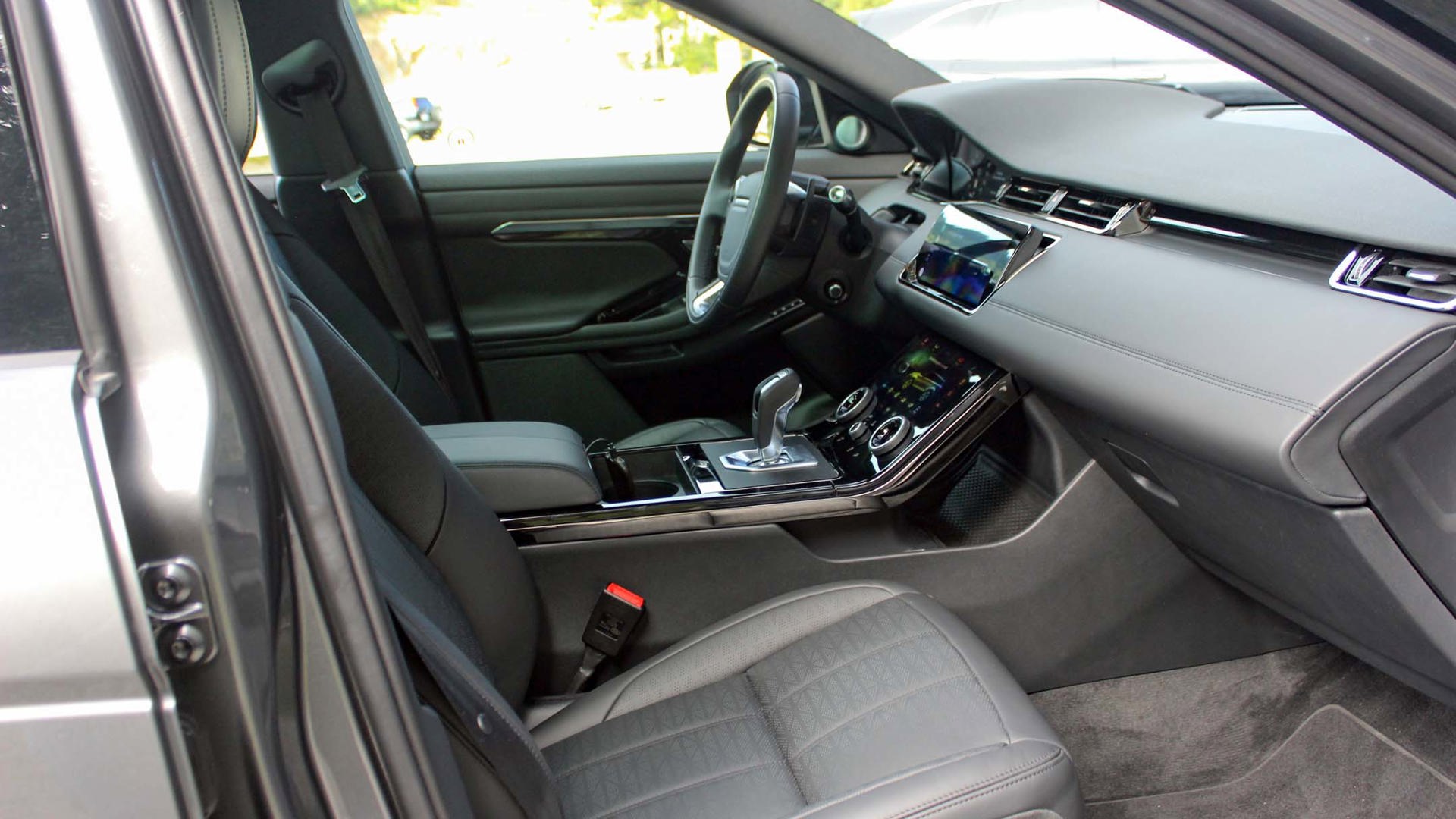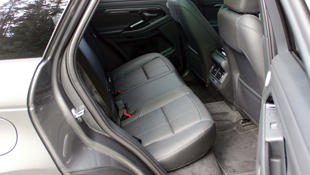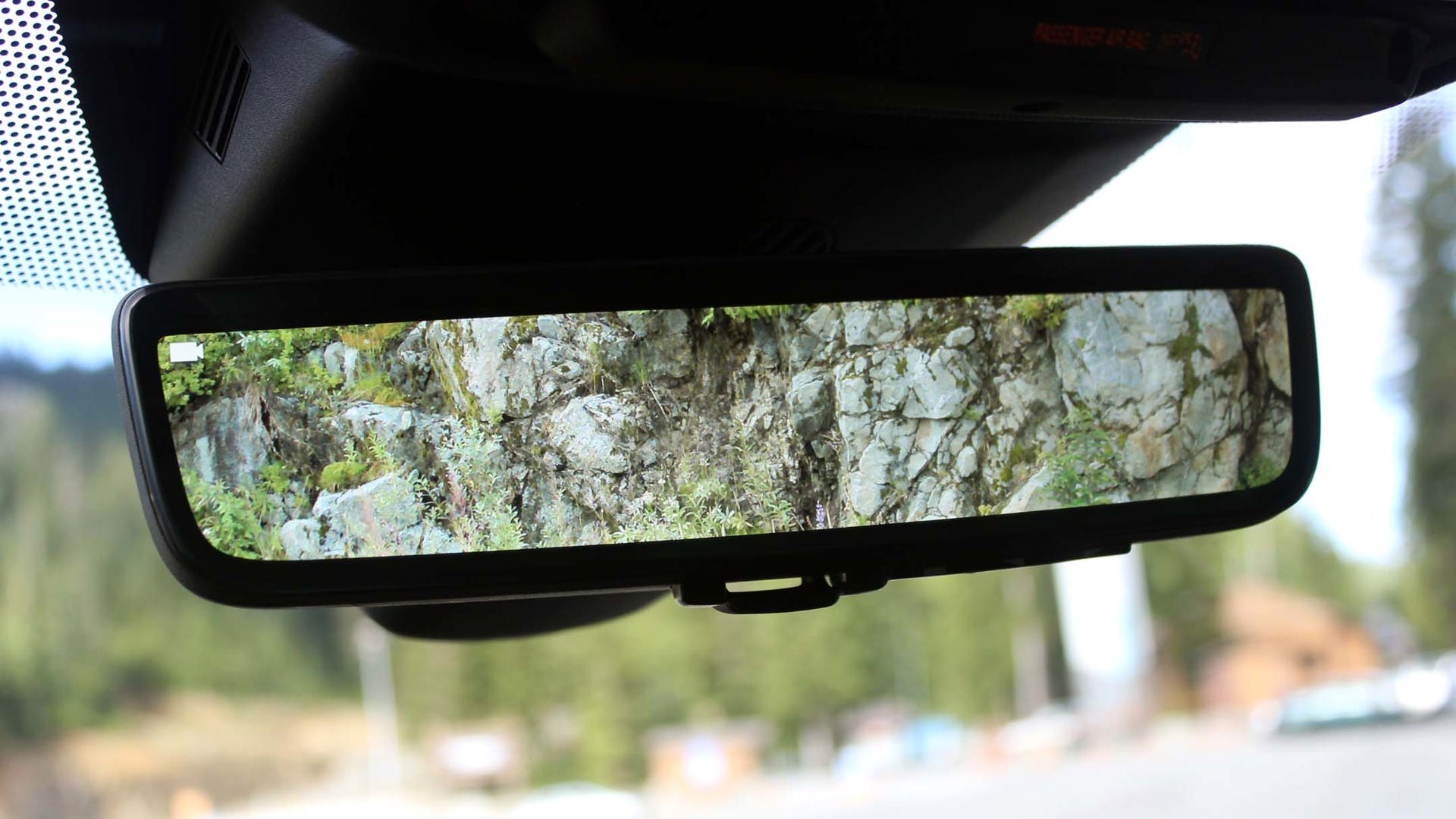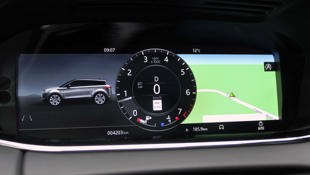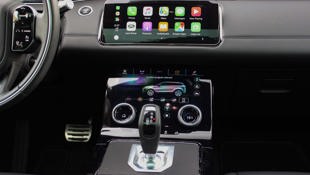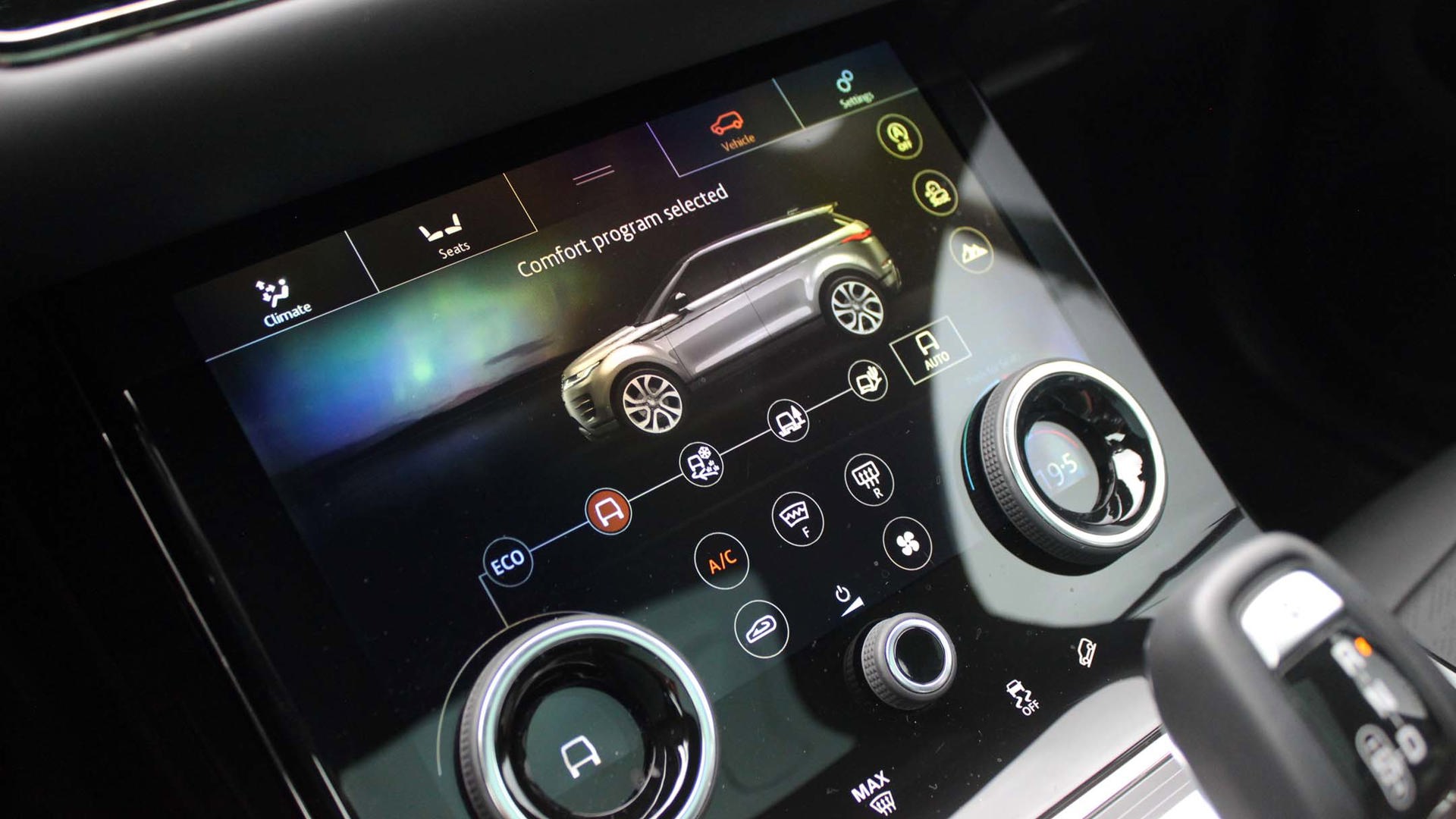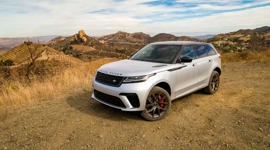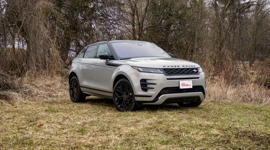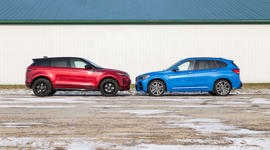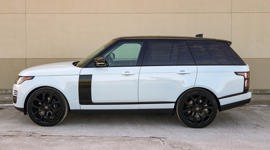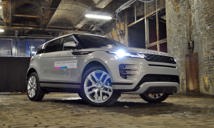 AutoTrader SCORE
AutoTrader SCORE
-
STYLING8/10
-
Safety7/10
-
PRACTICALITY7/10
-
USER-FRIENDLINESS9/10
-
FEATURES7/10
-
POWER8/10
-
COMFORT7/10
-
DRIVING FEEL7/10
-
FUEL ECONOMY7/10
-
VALUE6/10
Let’s start this review of the 2020 Range Rover Evoque by first taking a quick look at its bigger sibling, the Velar. It moved the styling yardstick for the Land Rover brand both inside and out when it came out in 2017, and the same can be said for the in-vehicle tech it introduced.
The successful execution of the midsize Velar left me keen to find out if the brand was able to capture that magic once again with the smaller Evoque.
Styling: 8.5/10
When it comes to exterior styling, there’s lots to like about the freshly minted Evoque. Of course, the original version made headlines when it was rumoured that Victoria Beckham had a hand in designing it. That rumour was eventually dispelled, but the seeds had been planted and folks pointed to how the taillights looked like they had eyelashes, how the grille was too narrow, or maybe how it wasn’t tough enough.
It appears Land Rover’s designers have taken those comments to heart. Gone are the eyelash-adorned taillamp lenses, the grille is a little more authoritative, and the headlights look almost like direct lifts from the Velar. It’s a somewhat more aggressive vehicle than before, and while it maintains the compact dimensions of the last version, it’s a little more lithe than previous. It also gets door handles that pop out at the press of a button on the key fob à la the Jaguar F-Type.
The cabin is dominated by a big and very Range Rover-esque steering wheel, as well as a host of digital display screens – three of them, in fact, though an argument could be made that there’s actually four with the optional digital rear-view mirror fitted inside. (Heck, since a head-up display (HUD) is also available, it could be said that there are actually five screens.)
Features: 7.5/10
The digital mirror is just the tip of the iceberg when it comes to features in the Evoque. Since my tester was done up in R-Design HSE guise, it had it all: 20-inch wheels (upgraded to gloss black here), 16-way adjustable heated front seats, perforated leather heated steering wheel, upgraded audio and infotainment systems, HUD, auto-levelling headlights, and more. Yet heated rear seats didn’t make the cut. That’s a big no-no at the luxury level – especially in Canada.
User Friendliness: 9/10
Since the infotainment system dominates so much of the interior, it has no choice but to walk the walk – which it does with ease. While buyers less accustomed to such a touch-heavy setup may be wary, they’ll be happy to know that it’s all quite intuitive once you get used to the fact that it’s quite interactive. What the two knobs mounted to the centre console control depends on which of the four tabs lining the top of the lower display you’ve selected. The Vehicle tab, for example, lets the left knob scroll through the five available drive modes. If you’ve selected the Climate tab, meanwhile, that same knob controls the temperature. Admittedly, it takes some getting used to; on a few occasions, I had to do a double-take before realizing I’d selected a different tab.
The other umpteen screens can also be configured to display whatever you’d like whenever you’d like it. The upper infotainment screen is used for features like navigation and Apple CarPlay; a HUD for drive-related info reflected on the windshield; and the instrument cluster screen for, well, all that and more. Looking for a traditional two-gauge set-up? You got it. How about one gauge plus navigation instructions? No problem. A map stretching across the whole display? The choice is yours.
Not long ago, I would’ve found all this technology to be a little much, but it’s so smoothly implemented in the Evoque. Better still, while the Evoque’s Range Rover badge often brings with it visions of either old-money luxury or crawling through a muddy field, the Evoque’s exterior styling has placed it firmly in the modern era and befitting of its techy interior.
Comfort: 7/10
Up front, the 16-way power seats make it so most any body type should be able to find a comfortable position – assuming, of course, any rear seat passengers are prepared to modify their seating in accordance. Because even though there’s more room inside than before, taller occupants up front make the rear seat space rather snug. The shallow-mounted anchors do mean that installing a child seat is a piece of cake, though I did have to spend some time tweaking the front passenger seat position to make sure it was livable with a rear-facing seat hooked in.
Practicality: 7.5/10
While a 40/20/40-split folding seat may seem like a pretty tame thing to get excited about, I’ve been a fan of the feature since I saw it in the Mazda CX-5 when it debuted back in 2012. It means you don’t lose an entire seat if you need to store a longer item. That pass-through will come in handy when it’s time to transport longer items, with a rather short cargo floor to work with. The Evoque’s compact proportions – it measures 1,648 mm tall, with a 4,371 mm overall length and 2,682 mm wheelbase – make it shorter than even the Honda Civic. Luckily, the rear hatch is fairly upright so at least there’s some added height to make up for the lost length.
The limited cabin space makes the digital rearview mirror even more beneficial, helping the driver see beyond a cargo hold filled to the brim or a back seat occupied by taller passengers. It also means the mirror angle doesn’t need to be adjusted to suit numerous drivers. (Of course, it can be used as a standard mirror by tugging the tab normally reserved for the anti-glare night setting.)
Power: 8.5/10
The Evoque is powered by a 2.0L turbo four-cylinder turbo, as most vehicles in the segment are, providing a great mix of performance and efficiency. Here, it’s rated at 296 hp and 295 lb-ft of torque, figures that seem a bit conservative as you dip into the throttle.
Output is transmitted through a nine-speed automatic transmission with tightly spaced ratios and paddle shifters. The big news, however – and why it can feel faster than the figures suggest – is the addition of a mild-hybrid system that uses energy recovered during braking to help boost acceleration. Put simply, the Evoque springs forth off the line like its compact looks suggest, and it will rarely leave you wanting more when it comes to passing on the highway.
How quickly it gets up and going never gets old, and the feeling that you’re actually driving one of the Evoque’s sporty Jaguar cousins is palpable. It’s a feeling driven home by that great automatic, which had me grabbing at the paddle shifters on a number of occasions simply because I wanted that feeling of power and speed to continue, and the speed with which the transmission responds works in concert with the engine to amplify your forward progress. If there was one thing I’d ask for from my tester, it would have been the so-called configurable dynamics option that lets you sharpen the throttle and set the shift points to push the performance envelope even further.
Fuel Economy: 7/10
Fuel economy-wise, I saw 11.3 L/100 km combined consumption during testing, a fine figure for a vehicle that feels as fast as this.
Driving Feel: 7.5/10
On my tester, the only drive modes that exist revolve around the all-wheel drive system. This is a Range Rover, after all, and though it’s a teensy-weensy one, it needs to be able to handle itself off the beaten track.
To help with this, there are five drive modes – normal, eco, sand, grass/gravel/snow, and mud/ruts – that adjust the traction control, throttle response, and transmission programming to help the Evoque through all kinds of conditions as smoothly and uneventfully as possible. A nifty add for 2020 is the standard under-vehicle monitor system, which actually makes the vehicle “invisible” and displays what’s going on ahead – and below – the Evoque on the central infotainment display. The feature makes rougher terrain that much easier to tackle.
Indeed, that’s all well and good, but it’s more likely the Evoque is going to spend most of its life around town, so its performance on the beaten track is probably more important to prospective buyers than its performance off it.
Luckily, aside from some body roll that’s bound to happen with such a short wheelbase and tall-ish ride height, the bushings, springs, and shock absorbers have been well tuned to mitigate those effects. The result is a ride that’s luxurious enough for something with Range Rover splashed across its hood, even with oversized 20-inch wheels underneath it.
Would I have liked a little more steering feel? The rack doesn’t quite have the input response that the powertrain does, so that’s technically a yes. Of course, as much as I liked to pretend I was in a sports car during my test, the Evoque isn’t one and the steering, when seen from that perspective, is fine.
Safety: 7.5/10
In addition to the adaptive high beams, emergency braking, lane-keep assist, traffic sign recognition, front and rear parking sensors, and cruise control are all standard. If you want more autonomous features, however, you have to select a “Drive Package” (standard on the tester I drove but optional elsewhere in the lineup) that adds adaptive cruise control, blind-spot assist, and emergency braking. I understand the need for a package for adaptive cruise control, but for a blind-spot monitor? Really?
Value: 6.5/10
The conversation surrounding the Evoque’s value revolves less around the actual figures and more about how convoluted its lineup is. At the top level, there are three trims: Evoque, R-Dynamic, and First Edition; pretty straightforward.
Once you’ve selected one of those three, there are further sub-trims to navigate. The Evoque trim gets two (S and SE), the R-Dynamic gets three (S, SE and HSE), and while the First Edition is only offered as one version, adding the various wheel, interior, and styling options can make your head spin. At least the website does a pretty good job of outlining what each feature adds. Being the HSE, my tester came pretty well equipped, the only real extras being the upgraded audio system and blackout exterior accents (excluding the wheels). I am a little dismayed, however, that even a top trim like this doesn’t come standard with adaptive suspension, heated rear seats, or a sunroof.
The Verdict
If you just focus on what the Evoque’s really good at – driving dynamics, power, off-road prowess – then all the rest of that stuff can be left by the wayside and you’ll still get a rewarding compact crossover experience. The question becomes whether you’re buying the smallest Range Rover for its quintessential “Range Rover-ness” – prestige, leather and wood – or you want that classic name wrapped in an athletic body that’s able to tackle a backroad as well as the best from BMW, Audi, and Acura. If it’s the latter, you won’t be disappointed. If it’s the former, you won’t be disappointed either, but you’ll have to pay to play.
| Engine Displacement | 2.0L |
|---|---|
| Engine Cylinders | I4 |
| Peak Horsepower | 296 hp @ 5,500 rpm |
| Peak Torque | 295 lb-ft @ 1,600–4,500 rpm |
| Fuel Economy | 11.8/9.1/10.2 L/100 km city/hwy/comb |
| Cargo Space | 612 / 1,430 L seats down |
| Model Tested | 2020 Land Rover Range Rover Evoque R-Dynamic HSE |
| Base Price | $62,500 |
| A/C Tax | $100 |
| Destination Fee | $2,195 |
| Price as Tested | $70,295 |
|
Optional Equipment
$5,500 – Corris Grey paint, $800; Black Exterior Package (gloss black Range Rover hood script, grille, hood vents, side vents, door mirror caps, Range Rover tailgate script, rear bumper, exhaust tips, body-coloured front bumper with gloss black valance), $800; 20” gloss black wheels, $500; fixed panoramic roof, $1,300; head-up display, $1,000; Meridian Surround Sound System, $600; Sirius XM satellite radio, $500
|
|
